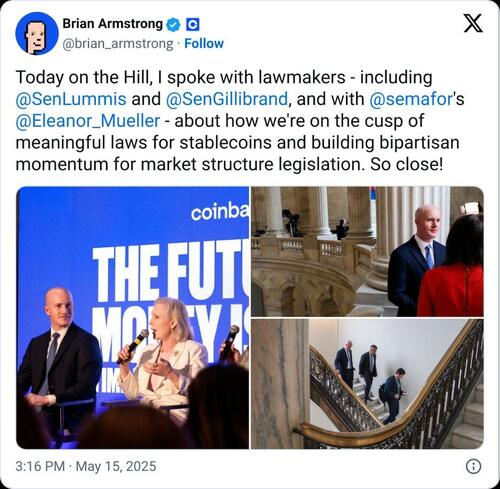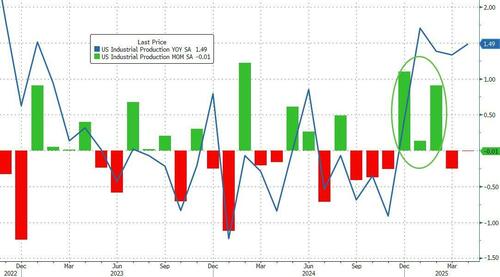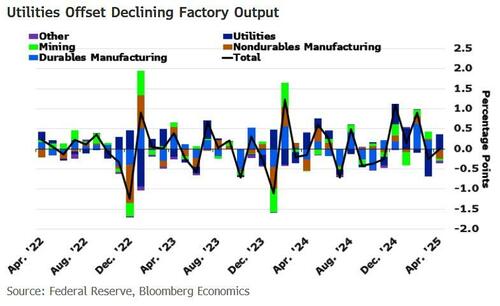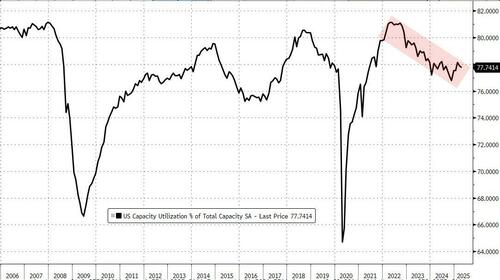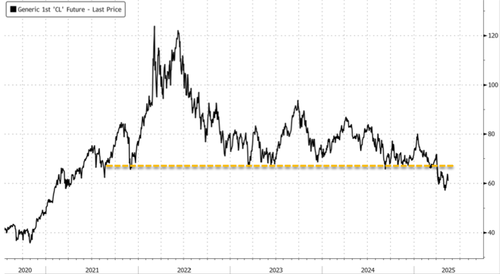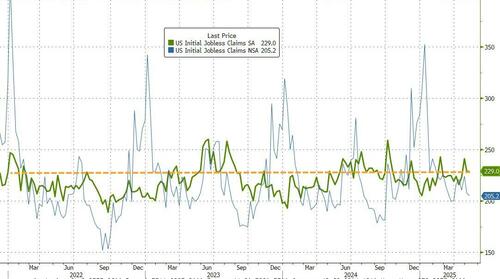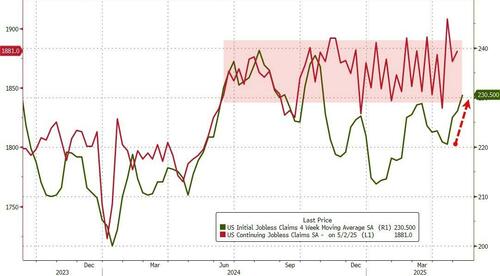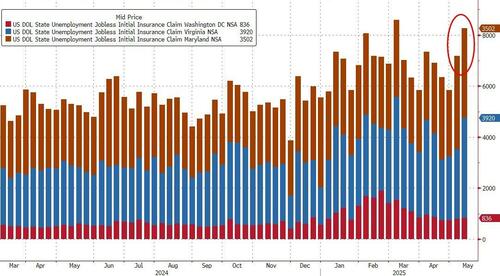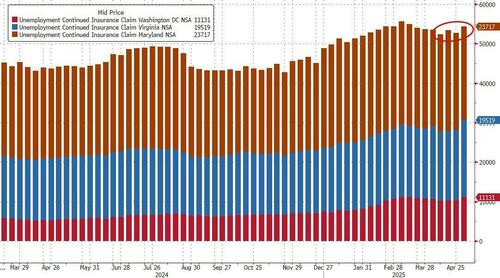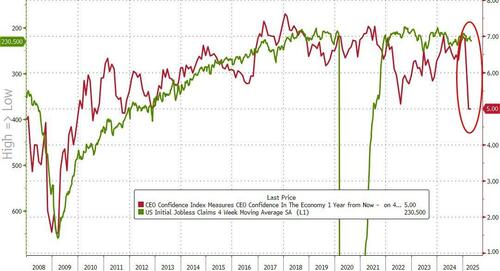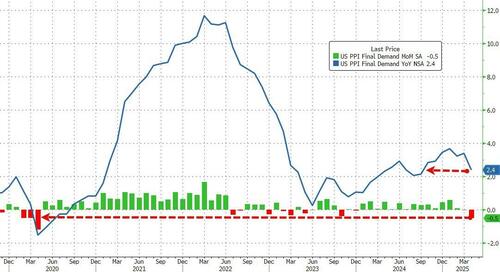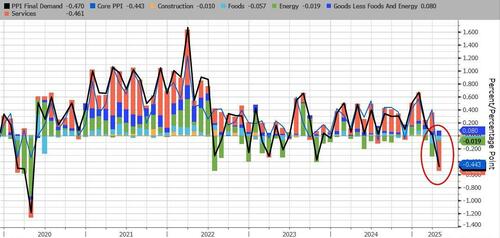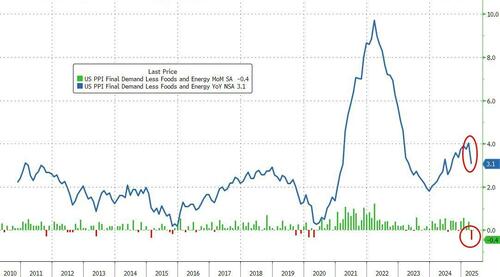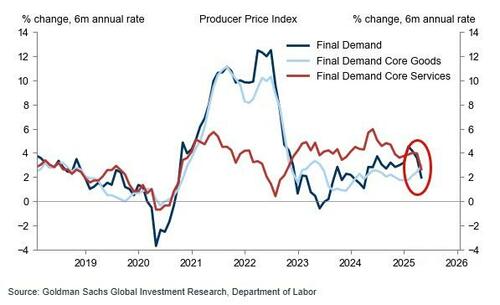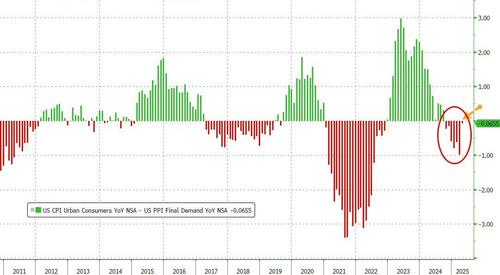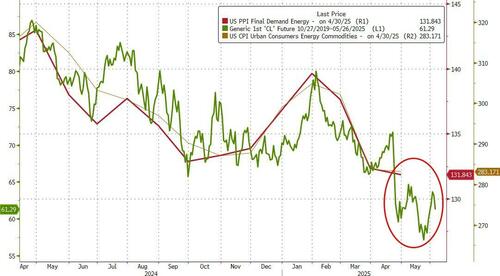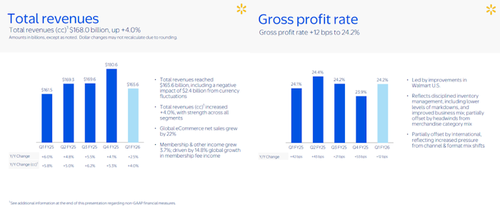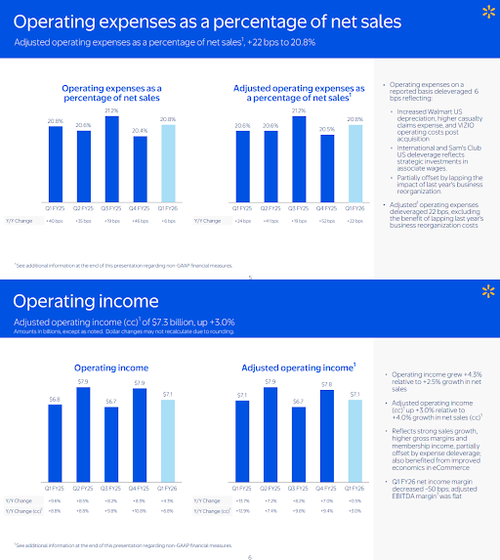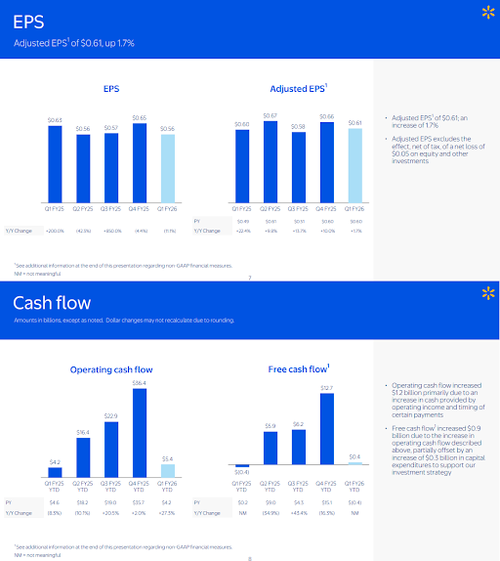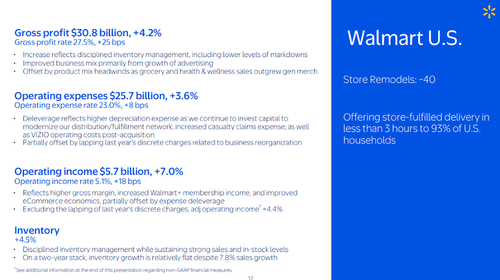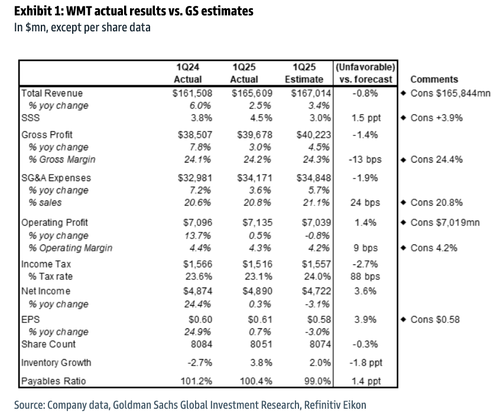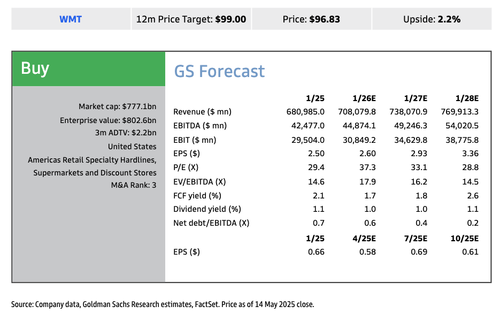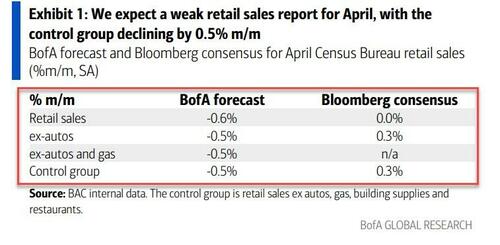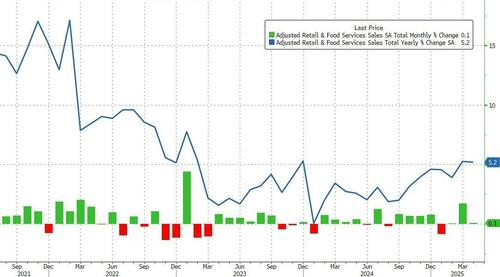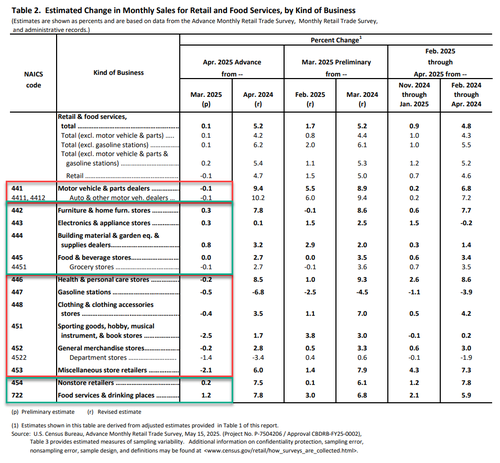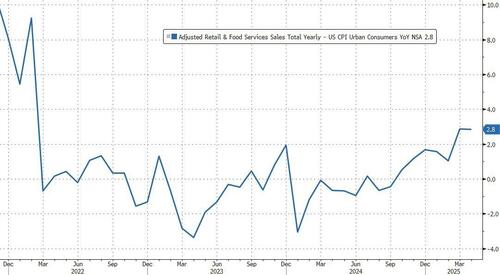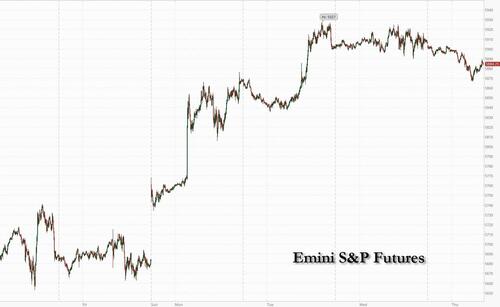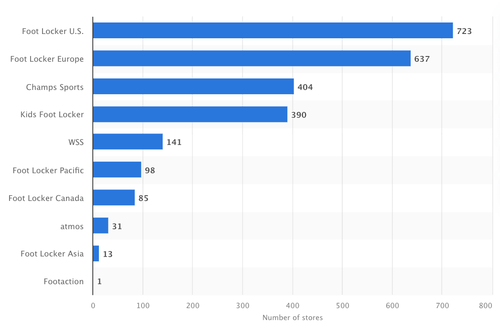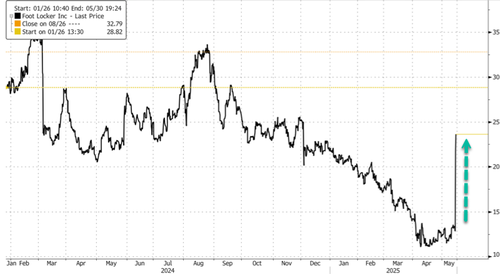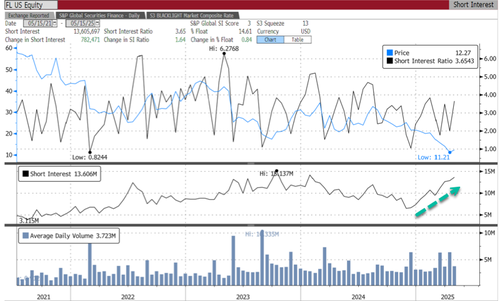In the name of tolerance, tolerance is being abolished; this is a real threat we face.
Distinction Matter - Subscribed Feeds
-
Site: Rorate CaeliAs Rorate has advertised a number of times in the past, the traditional Benedictine monks of Notre Dame Priory in Tasmania, Australia, who stand in the stream of the retreat-giving monks of St Joseph de Clairval in Flavigny, will be offering two retreats this July in Ohio, one for men and one for women. Details in the poster below. I know this community well and wholeheartedly recommend the Peter Kwasniewskihttp://www.blogger.com/profile/05136784193150446335noreply@blogger.com
-
Site: LifeNews
There is a major battle in the U.S. House over negotiations this week on the federal budget. Lawmakers are making key decisions to either keep the abortion defunding language in the 2026 budget or remove it and continue funding Planned Parenthood and Big Abortion.
The result of this debate will determine whether nearly 800 million dollars in taxpayer funding continues flowing to Planned Parenthood. This is just the amount Planned Parenthood received in the last year. This figure does not include ALL abortion funding. The total amount of funding for Big Abortion is likely more than 1 TRILLION DOLLARS!
The latest annual report from Planned Parenthood reveals it raked in nearly 800 MILLION dollars in taxpayer money last year — that’s more than 2.1 million dollars every day — courtesy of you and me. That’s an increase of 100 million dollars from the prior year. And this money raised their annual abortion rate to 402,230 babies!
Demand Congress stop paying Planned Parenthood over 2 million dollars every day to kill babies.
REACH PRO-LIFE PEOPLE WORLDWIDE! Advertise with LifeNews to reach hundreds of thousands of pro-life readers every week. Contact us today.
The good news is that defunding Planned Parenthood and Big Abortion language is included in the funding bill. The challenging news is that we need every vote to pass the bill, and some are on the fence. These members need to hear from you!
Planned Parenthood has become America’s #1 taxpayer-funded propaganda machine for child murders, overt sexualization, gender confusion, and political manipulation.
+ + Nearly 40% of PP’s total income comes from taxpayers.
According to Planned Parenthood’s 2023–2024 annual report, a staggering 39% of their total revenue — 792.2 million dollars — came from government reimbursements and grants.
That’s our tax dollars, and they are not slowing down. That number has grown year over year. In 2024 alone, they hauled in 2.17 million dollars per day from federal and state coffers — all while over 402,000 babies were slaughtered.
Planned Parenthood’s annual report calls itself a “force for hope,” but that slogan is a cruel distortion of the truth. There is no hope in an organization that profits from killing over 402,000 unborn children a year, mutilating the bodies, and leaving countless women emotionally scarred and spiritually devastated.
Hope builds the future — but Planned Parenthood destroys it, one child, one mother, one family at a time. Their evil deeds cause depression, grief, and irreversible harm. To parade that destruction under the banner of “hope” is not just hypocritical — it’s demonic.
Remember that these staggering numbers apply just to Planned Parenthood. Our federal dollars also fund other abortions. THIS EVIL MUST STOP!
Indoctrinating Children in Classrooms
Planned Parenthood is embedding itself in school curricula across the country. The group boasts about developing and distributing classroom materials so extreme, so vile, we refuse to reprint them in this email.
They’re pushing explicit content and dangerous ideologies to children as young as elementary school. The materials promote promiscuous activity, gender confusion, and radical autonomy — all under the banner of “health.”
They launched a video series that mocks virginity and family values. It claims that “virginity is a completely made-up concept” and teaches minors how to hide promiscuous activity from parents.
And you paid for this … and more.
Last year, Planned Parenthood gave 175,000 dollars in “Brave Awards” to LGBTQ youth organizations to target confused children.
Make no mistake: This is grooming, and it’s funded by you. We are being forced to pay for a destructive agenda that leads to depression, mutilation, and suicide that is recast as “hope.”
This is government-subsidized destruction of life, family, and moral order.
LifeNews Note: Mat Staver is the Chairman of Liberty Counsel Action and Founder and Chairman of Liberty Counsel.

The post Tell Congress to Stop Sending Planned Parenthood $2 Million Every Day to Kill Babies appeared first on LifeNews.com.
-
Site: Catholic Conclave“Pope Francis thoroughly mixed the cards” ‒ Cardinal László Német on the conclaveYes, that is Rupnik art behind him in the reception hall of the Archbishop's Palace, It depicts European saints. Below Rupnik's version of Pope St John Paul II with St Edith SteinWe were guests of Metropolitan Archbishop of Belgrade, Cardinal László Német, in the Serbian capital on Tuesday. We traveled to Catholic Conclavehttp://www.blogger.com/profile/06227218883606585321noreply@blogger.com0
-
Site: RT - News
No casualties or significant damage have been reported
A 5.2-magnitude earthquake struck central Türkiye on Thursday, shaking the capital Ankara as President Recep Tayyip Erdogan hosted Ukraine’s Vladimir Zelensky.
The quake hit at 3:46pm local time in the Kulu district of Konya province, according to Türkiye’s Disaster and Emergency Authority (AFAD). The tremor was also reportedly felt in the surrounding provinces.
Ankara Mayor Mansur Yavas confirmed that the quake was felt in the capital, saying authorities were “closely monitoring developments.”
Zelensky, who had announced his intention to visit Türkiye following Russian President Vladimir Putin’s proposal that Moscow and Kiev participate in direct talks, reportedly flew to Albania, having despatched a team of negotiators to Istanbul.
READ MORE: Putin proposes unconditional peace talks with Ukraine (FULL SPEECH)
Last week, Putin proposed resuming direct dialogue to find a lasting settlement to the Ukraine conflict. The talks, which are expected to take place imminently in Istanbul, would mark the first such meeting between Russia and Ukraine since 2022, when the peace process was aborted by Kiev.
 Ankara, Türkiye in the aftermath of an earthquake, May 15, 2025
© Getty Images / Anadolu / Contributor
Ankara, Türkiye in the aftermath of an earthquake, May 15, 2025
© Getty Images / Anadolu / Contributor
Zelensky, who had previously said he would only talk directly with Putin, said later in the day on Thursday that he would send a delegation led by Ukrainian Defense Minister Rustem Umerov.
-
Site: Zero HedgeDemocratic Senators Remove Trump-Targeting Provisions In Push To Pass Stablecoin BillTyler Durden Thu, 05/15/2025 - 12:05
The US Senate could pass a key bipartisan stablecoin bill as soon as next week after removing language targeting President Donald Trump and his family’s sprawling crypto interests.
As Jesse Coghlan reports below for CoinTelegraph, Republican Senator Cynthia Lummis said onstage at an event by Coinbase’s lobbying arm, Stand With Crypto, that she thinks it's a “fair target” to have the Guiding and Establishing National Innovation for US Stablecoins Act, or GENIUS Act, passed by May 26 — Memorial Day in the US.
Joining her onstage was Democratic Senator Kirsten Gillibrand, who hinted that the bill’s language was changed to scrap provisions that targeted Trump’s various crypto projects, which include memecoins, a crypto platform, a stablecoin and a crypto mining company that plans to go public, among others.
“When this language comes out, people will see really good refinement, a lot of progress, on things like consumer protection, and bankruptcy protection, and ethics,” Gillibrand said.
“Things beyond just ‘what’s the structure?’ and ‘what’s required for an issuer?’”
Senate Democrats pulled support for the bill on May 8 and stalled its momentum, airing concerns that it wouldn’t help address multiple crypto-tied deals that will personally enrich Trump.
“A lot of what President Trump is engaged in is already illegal,” Gillibrand said.
“I also think his issuance of a memecoin is illegal based on current law.”
“It’s literally offering anyone who wants to curry favor with the administration to just send him money — that’s about as illegal as it gets.”
“I’m not so worried about this bill having to deal with all President Trump’s ethics problems. What this bill is really intended to do is regulate the entire space of stablecoins,” she added.
Source: Brian Armstrong
Gillibrand said the revised bill includes “some ethics requirements,” but it was “not an ethics bill.”
“If we were dealing with all President Trump’s ethics problems, it would be a very long and detailed bill,” she added.
Coinbase CEO Brian Armstrong, also on stage, was hopeful the Senate would vote on the stablecoin bill “early next week.”
Armstrong, whose company cozied up to Trump by donating $1 million to his inauguration fund, declined to comment when asked if the President’s memecoin could impact the passage of bipartisan crypto bills.
“It’s not my place to really comment on President Trump’s activity,” he said.
“What I do think is important is that this bill remains focused on stablecoins.”
Crypto bills “absolutely critical” to pass before midterms
The crypto industry is pushing for Congress to pass the GENIUS Act and a Republican-drafted crypto market structure bill before the midterm elections on Nov. 3, 2026, where all 435 House seats and a third of the 100 Senate seats are up for election.
“We have a very narrow window to get legislation through between now and the midterms,” Marta Belcher, the president of the crypto lobby group the Blockchain Association, told Cointelegraph at the Consensus conference in Toronto.
“I strongly suspect that window is going to close very quickly. I don't know if we're going to get another window like this to get legislation through,” she added.
“It's absolutely critical that we get it through now, especially because there really is a real possibility that in the future we end up with an administration that is hostile to crypto.”
The association’s communications director, Chris Jonas, added that it’s critical the bills pass before Congress takes a recess for the month of August.
“Once you get into the calendar year of the midterms, historically not a lot of legislation moves, so that's why it’s so critical,” he explained.
Trump should be on track to sign both crypto bills before the August break, according to Bo Hines, the executive director of the Presidential Council of Advisers for Digital Assets.
Hines noted on stage at Consensus on May 13 that negotiations on both bills are still ongoing, but it was “the President's desire” to sign both “stablecoin legislation and market structure legislation before the August recess."
-
Site: Zero Hedge"Patience To See, Not To Guess"Tyler Durden Thu, 05/15/2025 - 11:50
By Benjamin Picton, Rabobank Senior Macro Strategist
Patience To See
Tech names drove the NASDAQ and S&P500 to further gains yesterday, while the Dow Jones fell for a second-straight session. Semiconductors performed especially well as fund managers caught underweight high-beta US megacaps continued a buying spree that was sparked by a 90-day tariff reduction between the US and China announced on Monday. Nvidia posted a 4.16% gain and AMD was up 4.68% as both companies inked deals with Saudi Arabia to sell more chips for AI applications. European stocks underperformed with most major indexes closing lower, and the Nikkei fell as funds flowed back into Hong Kong’s Hang Seng index and China’s CSI300.
While stocks were rising, US 10-year bond yields poked back above the psychological 4.50% level to close the day up 6bps at 4.54%. 30-year Treasury yields closed half a bip below the intraday highs at 4.98%, which means that yields on both the 10-year and the 30-year are now trading above the levels that were in effect on April 9th when the Trump administration apparently cried “uncle!” in response to bond market pressure and kicked the implementation of reciprocal tariffs into the long grass for 90 days.
Perhaps we are about to find out whether it really was rising bond yields that forced the about face on those reciprocal tariffs, or if Scott Bessent has some other rabbit to pull out of his hat to force long yields lower. Rising bond yields is a problem for America’s chief bond salesman who has trillions of Dollars’ worth of debt to refinance in the months ahead. With the Fed still engaged in quantitative tightening, and enormous budget deficits still being run (despite DOGE), Bessent is going to have to work hard to sniff out other bids, and US homebuyers better hope that he can convince offshore investors that Treasuries yielding 4.5-5% are just too juicy to last. One wonders how durable the rally in long-duration tech can be while yields on long bonds are making new highs.
Fed Speakers yesterday offered no help to the Treasury Secretary by giving the impression that there is no rush to cut the Fed Funds rate any further. Mary Daly said that the Fed had to have “patience to see, not to guess”, which seems to discount the possibility of any kind of pre-emptive policy action. Daly also said that if you take a step back from all the tariff uncertainty the underlying economy is experiencing solid growth, with a strong labor market and declining inflation. That assessment might be a little bit like saying that the Dinosaurs were in really good shape if you ignore the uncertain effects of the approaching meteor.
In the land of hard data, the US economy shrank in Q1 because of a surge in imports that could be replicated in Q2 as the 90-day reprieve on China tariffs encourages importers and retailers to “reload the gun” on goods inventories. Two consecutive quarters of negative growth is the definition of a recession, but get ready for plenty of commentators to suggest that this one doesn’t really count (it wouldn’t be the first time!).
Meanwhile, President Trump continues his dealmaking tour of the Middle East where Qatar has now reportedly agreed to purchase as many as 210 new jets from Boeing. This comes off the back of the semiconductor, energy and military hardware deals signed in Saudi Arabia, Trump’s announcement that sanctions on Syria will be lifted and his meeting with the new Syrian President, who he urged to normalize relations with Israel.
It’s worth pointing out that while the markets were mostly focused on deals to sell more US chips and US energy, there were also announcements of new sanctions on companies facilitating the sale of Iranian oil to China and a new guidance issued by the Commerce Department that the use of Huawei’s Ascend AI chips “anywhere in the world” constituted a violation of US export controls.
As this Daily noted yesterday, 90-day tariff reduction notwithstanding, what is happening in the Middle East and with trade more broadly should serve as a signal that geopolitical competition between the United States and China isn’t going away.
-
Site: RT - News
The US reportedly wants to reopen military dialogue with Moscow to support Ukraine peace efforts
The US has proposed resuming long-stalled security talks under the NATO-Russia Council (NRC) framework as part of efforts to negotiate a peace deal in the Ukraine conflict, Bloomberg has reported.
The report comes ahead of direct negotiations between Russian and Ukrainian delegations.
The NRC, a forum created in 2002 for dialogue between the US-led military bloc and Moscow, effectively ceased practical operations in 2014. That year, Crimea joined the Russian Federation after holding a referendum following a Western-backed armed coup in Kiev. The council met to discuss the situation in Ukraine 11 times, until the conflict’s escalation in 2022, after which NATO cut off all communication.
The US has reportedly offered to revive the NRC format as part of its efforts to talk Russia into freezing the Ukraine conflict. Last month, White House special envoy Steve Witkoff visited Moscow and reportedly attempted to persuade Russian President Vladimir Putin to agree to a ceasefire that would suspend fighting along current front lines, in exchange for sanctions relief and US recognition of Crimea.
READ MORE: Rubio outlines US expectations from Russia-Ukraine talks
“The US has since added new details to the proposal, including an offer to revive security talks under the NATO-Russia Council,” the outlet wrote on Thursday, citing an anonymous source familiar with the matter.
Read more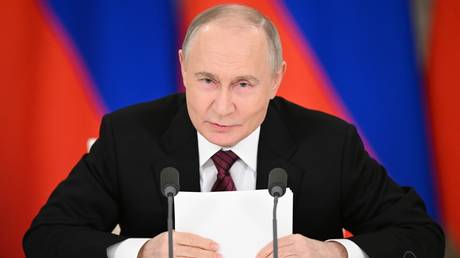 Kremlin rules out Putin appearance at Ukraine peace talks
Kremlin rules out Putin appearance at Ukraine peace talks
US President Donald Trump has backed Putin’s proposal to resume direct peace talks between Moscow and Kiev, despite initial opposition from Ukraine’s Vladimir Zelensky. The Ukrainian leader demanded that Russia first agree to an unconditional 30-day ceasefire – a demand Moscow has repeatedly rejected, protesting that a temporary pause would be used by Kiev to rearm and regroup.
The Russian delegation for Thursday’s talks in Istanbul is headed by presidential aide Vladimir Medinsky. Zelensky has confirmed that the Ukrainian delegation will led by Defense Minister Rustem Umerov.
Ukraine unilaterally withdrew from previous talks in 2022 after then UK Prime Minister Boris Johnson came to Kiev and told them to “just keep fighting,” the head of the Ukrainian delegation at the time, David Arakhamia, later told the media.
-
Site: LifeNews
Liberty Counsel filed an amicus brief to the U.S. Ninth Circuit Court of Appeals in National Institute of Family and Life Advocates v. Bonta, a case where California Attorney General Rob Bonta is attempting to silence pro-life pregnancy centers from informing women about progesterone therapy as a means to reverse the abortion drug Mifepristone. In March 2025, a federal judge denied a motion to stop the censorship against two pregnancy center chains, Heartbeat International and RealOptions Obria Medical Clinics, allowing the state to use fraud and false advertising laws to stop the centers from promoting that an abortion in progress can be safely reversed.
Liberty Counsel argues this “weaponization” of fraud laws to censor pregnancy centers is viewpoint-based discrimination and an unconstitutional restriction on free speech. Liberty Counsel has represented pro-life pregnancy centers and submitted the brief to help these organizations retain the freedom and autonomy to protect life for unborn children. This includes the right for these pregnancy centers to speak and promote the treatment known as “abortion pill reversal” (APR).
REACH PRO-LIFE PEOPLE WORLDWIDE! Advertise with LifeNews to reach hundreds of thousands of pro-life readers every week. Contact us today.
The APR protocol uses progesterone, a safe and naturally occurring hormone that has been used safely and effectively for decades to prevent miscarriage and preterm labor. Progesterone can potentially reverse the effects of the abortion pill Mifepristone if a woman changes her mind within 72 hours after taking the drug. Mifepristone starves the baby to death by blocking the naturally-occurring progesterone that helps a woman’s body sustain the baby.
Despite the pregnancy centers offering APR services free of charge for no economic gain, AG Bonta claims “someone must bear the cost,” and has accused the centers of fraudulent business practices and false advertising. He claims that APR is “commercial speech” that can be regulated by business laws.
However, in an October 2023 press release, AG Bonta revealed his ideological viewpoint claiming advertisements for APR contained “lies and misinformation” and that most women “do not regret their abortion.” Yet, statistics show that 70 percent of women experience grief and regret after an abortion, and that the APR protocol has likely saved more than 6,000 unborn babies with a success rate of up to 64-68 percent.
In the brief, Liberty Counsel noted the context makes clear that AG Bonta rejects pro-life speech related to saving unborn children and conveys a message that because most women allegedly do not regret their abortions, then none of his constituents should have the choice to reverse an abortion, wrote Liberty Counsel.
AG Bonta supports women having the choice to seek a chemical abortion, yet wants to prohibit the same women having the knowledge of the choice to potentially reverse the abortion with progesterone.
“That unconstitutional dichotomy is plainly viewpoint discrimination and violates the First Amendment,” wrote Liberty Counsel.
Liberty Counsel also stated that APR-related speech is not based on commerce, and to classify it as both “commercial” and “false or misleading” contradicts 80 years of commercial speech precedent.
Notably, when the district court allowed AG Bonta’s censorship to stand, it not only treaded over First Amendment protections, but essentially outlaws off-label pharmaceutical use. While the U.S. Food and Drug Administration approved progesterone about 50 years ago to help maintain healthy pregnancies, prevent miscarriages, and for other uses, the district court took issue with this approval because there are not many studies assessing progesterone’s safety for use in APR. Despite decades of safe progesterone use, the district court deemed it unsafe for APR.
However, as Liberty Counsel explains, the FDA does not need to approve progesterone for every conceivable use, and healthcare providers can generally prescribe the drug for an unapproved use when they judge that it is medically appropriate for their patient.
“The district court’s sweeping ruling eliminated First Amendment speech protections for non-profits, while simultaneously outlawing off-label pharmaceutical marketing for other entities not espousing a pro-life viewpoint, and contradicting decades of legal precedent regarding the definition of commercial speech. It cannot stand under Supreme Court precedent,” wrote Liberty Counsel.
According to Dr. William Lile, who is board certified in Obstetrics and Gynecology and who has delivered thousands of babies, progesterone is “bio-identical” and “as natural as it can possibly be” to what a pregnant woman produces. Dr. Lile told Liberty Counsel that he has personally reversed the abortion pill 15 out of 19 times (a 78 percent success rate) and that abortion pill reversal protocol has safely reversed Mifepristone thousands of times across the nation.
More information about reversing the abortion pill can be viewed here.
Liberty Counsel Founder and Chairman Mat Staver said, “The abortion pill reversal protocol gives a woman a chance to save her unborn baby by safely reversing an abortion. The government does not have the power to chill the free speech of pregnancy centers and take away a woman’s option to safely stop an abortion. California has deemed the off-label progesterone use and promotion as unfavored speech and pro-abortion use and advertisement of Mifepristone as favored speech. This attempt to weaponize business laws to censor live-saving treatment is blatantly unconstitutional and should be permanently struck down.”

The post California Censors Free Speech at Pro-Life Pregnancy Centers appeared first on LifeNews.com.
-
Site: Zero HedgeTrump Very Displeased With Tim Cook's 'Made-In-India' iPhone Blitz, Wants Production In USTyler Durden Thu, 05/15/2025 - 11:30
Apple is turbocharging its "friend-shoring" strategy by shifting more iPhone production from China to India—a move that could soon result in American consumers purchasing iPhones made in India. However, during President Trump's Gulf tour, he expressed new concern over the supply chain shift (at least for the first time publicly), urging Apple CEO Tim Cook to re-shore some of that iPhone production to the United States.
"I had a little problem with Tim Cook yesterday," Trump told reporters in Qatar on Thursday, on his latest leg of his Middle East tour. The president said his problem centers around Indian factories producing a "majority" of iPhones for the U.S.
Trump criticized Cook's plan: "I said to him,' My friend, I treated you very well. You're coming here with $500 billion, but now I hear you're building all over India.' I don't want you building in India."
As a result of their meeting, Trump said Apple will be "upping their production in the United States."
"I told Tim Cook we're not interested in you building (Apple) in India, they can take care of themselves, you up your production here (US)," claimed Trump. He added that India was one of the highest tariff-imposing countries & has now made an offer to reduce tariffs significantly… pic.twitter.com/11p9okfjTg
— CNBC-TV18 (@CNBCTV18News) May 15, 2025Earlier in the week, in the first leg of his tour, Trump praised Nvidia CEO Jensen Huang at the Saudi-U.S. Investment Forum in Riyadh, saying: "Tim Cook isn't here, but you are."
Trump's comments follow a recent Financial Times report indicating that Apple's friend-shoring strategy could result in as many as 60 million iPhones being produced in India by 2026—or the amount required to satisfy the U.S. market.
-
Apple Races To Boost iPhone Production In India, Vietnam As Trump Pauses Tariffs
-
Apple Turbocharges Friendshoring: Your Next iPhone Could Be Made In India
Apple does not produce smartphones in North America but has pledged to invest $500 billion in the U.S. market over the next four years.
Wall Street analysts have estimated that U.S. iPhone production would take years and cost tens of billions of dollars.
U.S. Commerce Secretary Howard Lutnick recently spoke with Cook about ramping up iPhone production in the U.S. Cook told Lutnick that "robotic arms" would be needed for production lines.
Lutnick said, "He's going to build it here," adding, "And Americans are going to be the technicians who drive those factories. They're not going to be the ones screwing it in."
Wedbush Securities recently estimated that a fully American-made iPhone could cost as much as $3,500, compared to the current average price of around $1,000. There are reports the next model could see the first price hike since the 2017 debut of the iPhone X.
Next lineup of iPhone...
Tarun Pathak, research director at tech analytics firm Counterpoint, said Trump's comments are a "familiar tactic from the president. He wants to push Apple to localize more and build a supply chain in the U.S., which is not going to happen overnight," adding, "Making in the US will also be much more expensive than assembling iPhones in India."
-
-
Site: LifeNews
On Tuesday, the City Council of the City of Big Sandy (pop. 1,343), passed an “Ordinance Outlawing Abortion, declaring Big Sandy a Safe Haven for the Unborn” in a unanimous 4-0 vote. The vote made the City of Big Sandy, located between the cities of Hawkins (pop. 1,278) and Gladewater (pop. 6,441) on State Highway 80 and between Winona (pop. 623) and Gilmer (pop. 5,216) on State Highway 155, the 58th city in the State of Texas and the 75th city in the nation to pass an ordinance prohibiting abortion.
After the vote, Mayor Linda Baggett shared, “I am blessed to serve with a City Council that is brave and stands together to protect our precious babies and their mothers. My prayer is that more communities take the same action making all of Texas a SAFE HAVEN FOR THE UNBORN.”
East Texans for Liberty Executive Director Stacy McMahan shared, “I am thankful for Mayor Linda Baggett and the Big Sandy City Council for their unwavering support in preserving innocent life and standing with State Senator Bryan Hughes and House Representative Cole Hefner in the fight for life.”
At the council meeting, Upshur County Republican Party Chairman Carl Byers shared that the majority party of the state of Texas supports the sanctity of innocent unborn human life. Byers referenced Proposition 5 placed before voters in the 2022 Republican Party Primary, which stated, “Texas should enact a state constitutional amendment to defend the sanctity of innocent human life, created in the image of God, from fertilization until natural death.” 83% of Republican Party Primary voters across Texas embraced the statement.
REACH PRO-LIFE PEOPLE WORLDWIDE! Advertise with LifeNews to reach hundreds of thousands of pro-life readers every week. Contact us today.
 In Upshur County, the proposition had 92% support. After the council meeting, at Big Sandy’s famous Circle M Crawfish restaurant, Byers shared, “I am so proud of the Big Sandy City Council for voting unanimously for the Pro-Life ordinance that will save innocent life. God Bless Big Sandy.” Byers now wants to see his hometown of Union Grove (pop. 357) become a sanctuary for the unborn.
In Upshur County, the proposition had 92% support. After the council meeting, at Big Sandy’s famous Circle M Crawfish restaurant, Byers shared, “I am so proud of the Big Sandy City Council for voting unanimously for the Pro-Life ordinance that will save innocent life. God Bless Big Sandy.” Byers now wants to see his hometown of Union Grove (pop. 357) become a sanctuary for the unborn.Big Sandy is the third city in Upshur County to pass such an ordinance and the fourteenth city in the Tyler-Longview Area Region to pass a “Sanctuary City for the Unborn” ordinance. Other cities in the region to have passed such ordinances include: Athens (pop. 13,503), Lindale (pop. 6,923), Rusk (5,664), Gilmer (pop. 5,216), Waskom (pop. 2,190), Naples (pop. 1,378), Omaha (pop. 1,021), East Mountain (pop. 899), Wells (pop. 853), Murchison (pop. 606), Avinger (pop. 371), Gary (pop. 335), and Poynor (pop. 314). Out of all of the cities to have passed the ordinances in Texas, Omaha is the only city to have recanted their ordinance.
Big Sandy’s ordinance is enforced in the same manner as the Texas Heartbeat Act — through a private enforcement mechanism. The ordinance reads, “Any person, other than the city of Big Sandy, and any officer or employee of the city, has standing to bring and may bring a civil action against any person or entity that: violates any provision” of this ordinance. The ordinance does not penalize the mother of the unborn child.
The six provisions of the Big Sandy Safe Haven for the Unborn ordinance: (1) prohibit performing an elective abortion and aiding or abetting elective abortions within the city limits of Big Sandy, (2) prohibit elective abortions on residents of Big Sandy – regardless of where the abortion takes place, (3) prohibit abortion trafficking through the City of Big Sandy, (4) prohibit the mailing of abortion-inducing drugs into the City of Big Sandy, (5) prohibit criminal organizations from doing business inside the city limits of Big Sandy, and (6) prohibit through or in the City of Big Sandy the transportation and disposal of the remains of unborn children who have been killed by an elective abortion across state lines and carried into Texas by waste management companies.
In addition to providing protections for pregnant mothers and their unborn children, the ordinance also educates about the Thriving Texas Families Program and directs people to the Texas Pregnancy Care Network website and The Pregnancy Network website operated by Human Coalition to be connected to these services.
The two other cities in Upshur County to have passed similar ordinances are the cities of Gilmer (pop. 5,216) and East Mountain (pop. 899). The Gilmer City Council adopted their ordinance on September 24, 2019 while the East Mountain City Council adopted their ordinance on July 20, 2020. Other cities in Upshur County which could consider the measure in the future include: Gladewater (pop. 6,441), Ore City (pop. 1,108), Clarksville City (pop. 865), Union Grove (pop. 357), and Warren City (pop. 298).
Big Sandy is not expected to be the last Sanctuary City for the Unborn in Texas, residents from all over the state are packing their local council chambers to advocate for further protections for pregnant mothers and their unborn children to spare them from the tragedy of abortion. Those who are interested in seeing their city pass an ordinance going as far as they can to end abortion are encouraged to sign the online petition found at the Sanctuary Cities for the Unborn website.
LifeNews Note: Mark Lee Dickson lives in Texas and is the founder of the Sanctuary Cities for the Unborn Initiative.

The post Big Sandy, Texas Becomes 75th City in America to Ban Abortions appeared first on LifeNews.com.
-
Site: Catholic Conclave“Initially he had thought about the possibility of calling himself Augustine, but, in the end, he thought Leo would be better”. Cardinal Fernando Filoni, who was also present at the Conclave, said this in an interview with Il Fatto Quotidiano. The reason for this thought is easy to say and is linked to Prevost’s vocation.In the solemnity of the moment, when the world heard the name of the new Catholic Conclavehttp://www.blogger.com/profile/06227218883606585321noreply@blogger.com0
-
Site: AsiaNews.itHundreds of people rallied demanding justice for Amshika who took her own life after 'months of official neglect and public shaming'. A teacher accused in connection with the affair was later released. A political cover-up is suspected. The story is highlighting the shortcomings of Sri Lanka's education system, as well as the pervasiveness of gender-based violence.
-
Site: LifeNews
More than a decade before he was elected and addressed the media as pontiff, Pope Leo XIV had spoken about evangelization amid modern media in an address that is still accessible, a Vatican expert spotlighted this week.
In 2012, then-Father Robert Prevost gave an address at a Synod about evangelization convened by Pope Benedict XVI, Sandro Magister explained in a May 13 article for his blog. The address considers how several Church Fathers responded to the non- and anti-Christian media of their time, which in turn provides insight for evangelizing amid the present-day’s media culture.
Please follow LifeNews.com on Gab for the latest pro-life news and info, free from social media censorship.
Magister described then-Fr. Prevost’s remarks as “astonishing, for the acuteness of the diagnosis of the mediatic distortions of today’s society, but even more for the reference to the Fathers of the Church — from Augustine to Ambrose and Leo the Great to Gregory of Nyssa — as teachers brilliant in taking up the challenges of communication of their time, and therefore in understanding how to best evangelize the society of the late empire.”
In his address during the 2012 Synod on Evangelization, then-Fr. Prevost said that mass media in the West “is extraordinarily effective in fostering within the general public enormous sympathy for beliefs and practices that are at odds with the Gospel; for example, abortion, homosexual lifestyle, euthanasia.”
Mass media may be tolerant of religion when the latter does not directly contradict the media’s positions on ethical problems, but if religious leaders do speak out, the media label their messages “as ideological and insensitive in regard to the so-called vital needs of people in the contemporary world,” he said.
In order to effectively evangelize against media-created ethical falsehoods, catechists and religious leaders need to develop better understanding of laboring amid the current media climate, he urged.
Church Fathers were successful in evangelizing “in great part because they understood the foundations of social communication appropriate to the world in which they lived,” then-Fr. Prevost said. “Consequently, they understood with enormous precision the techniques through which popular religious and ethical imaginations of their day were manipulated by the centers of secular power in that world.”
Magister shared the full text of the address, which can be accessed here.
LifeNews Note: McKenna Snow writes for CatholicVote, where this column originally appeared.

The post In 2012, Pope Leo XIV Slammed the Media for Its Liberal Bias and Promoting Abortion appeared first on LifeNews.com.
-
Site: LES FEMMES - THE TRUTH
-
Site: LifeNews
Prosecutors dropped charges May 9 against an Ohio pro-life advocate who was arrested in December for providing a Christian witness with a megaphone outside an abortion facility.
CatholicVote previously reported that Zack Knotts was on a public sidewalk outside a Cuyahoga Falls abortion facility and using a megaphone to advocate for the unborn and to tell women entering the facility, “There’s hope in the Gospel of Jesus Christ for all of you.”
Police then approached Knotts and ordered him to go with them, later telling him that they had received complaints of “disorderly conduct” that caused “inconvenience, annoyance, or alarm” to those around him.
Please follow LifeNews.com on Gab for the latest pro-life news and info, free from social media censorship.
Knotts appeared in court Jan. 2 and pleaded not guilty to the charges. Represented by the American Center for Law and Justice (ACLJ), he stood trial May 9. The prosecutors ultimately dismissed the charges.
According to the ACLJ, pro-abortion advocates outside the clinic had been loudly shouting violent threats at Knotts and his wife, Lindsay Davis-Knotts, but the police targeted him instead. ACLJ stated that the police did not take statements from anyone except a fellow police officer acting as private security at the abortion facility. The police ignored other witnesses, did not corroborate claims against him, and refused to acknowledge video evidence that Knotts was innocent, the ACLJ added.
“Zack and Lindsay never left the public sidewalk. They never blocked access to the abortion clinic. They never threatened anyone,” the ACLJ stated. “The same cannot be said for those who tried to silence them. What happened here wasn’t just a mistake — it was a warning shot to pro-lifers everywhere: ‘Speak out, and we’ll come for you.’ But today’s dismissal shows what can happen when you refuse to back down.”
In an emailed statement, Knotts told CatholicVote that he and his wife are “overwhelmed with gratitude to God.”
“As we walked into that courtroom, I carried a deep, unshakable peace — because I knew God would fight for me. And He did,” Knotts said. “He showed up in power, and so did the army of friends, family, and faithful saints who have stood beside us, many of whom labor shoulder-to-shoulder with us on the sidewalks outside abortion clinics. Though the process at times felt like a heavy weight — just the constant cloud of waiting for resolution — we never walked alone. God sustained us.”
Quoting Proverbs 24:11 and 31:8-9, which are commands to defend the defenseless, he stated that an effort must be made to end abortion once and for all.
“We will not stop. We will obey what God has commanded and defy tyrants. We will continue to be a voice for the voiceless, to rise and speak for those who have no defender,” he said. “And we call on the church — the body of Jesus Christ — to wake up. This isn’t a suggestion; it’s a command. We are all called to this. Silence in the face of child sacrifice is complicity.”
LifeNews Note: Hannah Hiester writes for CatholicVote, where this column originally appeared.

The post Charges Dropped Against Pro-Life Pastor for Preaching Outside Abortion Center appeared first on LifeNews.com.
-
Site: RT - News
Finland has proposed raising the maximum age of reservists from 50 to 65 amid wider militarization within the EU
The Finnish Defense Ministry has submitted a proposal to raise the maximum age for military reservists to 65, according to a press release published on Wednesday. The move is part of a broader militarization trend among European NATO member states.
The proposed reform would apply to all citizens liable for being called up who were born in 1966 or later, potentially adding 125,000 personnel to Finland’s reserve forces over a five-year transition period. If enacted, the total number of reservists is projected to reach one million by 2031, the Defense Ministry noted.
Currently, rank-and-file soldiers are removed from the reserves at age 50, while officers exit at 60. The proposal would not apply retroactively to those already over 60.
According to the ministry, refresher training for 50–65-year-olds would be organized for those assigned wartime duties. No upper age limit would be set for military service volunteers.
The bill is expected to be submitted to the Finnish Parliament before its summer recess begins in late June.
The EU countries, including Finland, have been militarizing amid persistent claims that Russia could attack the bloc in the coming years. Moscow has denied having such intentions and has accused NATO and EU officials of “irresponsibly stoking fears” of a fabricated threat.
Read more NATO militarization pressure mounts ahead of summit – Bloomberg
NATO militarization pressure mounts ahead of summit – Bloomberg
Finland, which shares a long land border with Russia, applied for NATO membership in 2022 following the escalation of the Ukraine conflict and formally joined the US-led military bloc in 2023. Since then, Helsinki has supported Kiev politically and militarily, with Finnish President Alexander Stubb backing its bids to join both NATO and the EU.
In March, during US-mediated ceasefire negotiations, Stubb called on Kiev’s Western backers to pump Ukraine with weapons and money “to its teeth.”
Helsinki exceeded NATO’s spending target by shelling out approximately 2.41% of its gross domestic product (GDP) on the military last year. Finland also formalized an agreement with the US that allows American forces access to Finnish bases near the Russian border.
Russia has lamented that Finland’s NATO accession has effectively erased beneficial bilateral ties between the two neighbors which had lasted decades. Moscow has condemned the US-led military bloc’s expansion towards its borders, viewing it as a threat to its national security.
READ MORE: Germany could reintroduce military draft – defense minister
In March, Foreign Ministry spokeswoman Maria Zakharova said the EU had “degraded into an openly militarized entity,” accusing the bloc of “inciting war” through its rearmament strategies.
-
Site: Zero HedgeUS Factory Production Tumbled In April, But...Tyler Durden Thu, 05/15/2025 - 10:10
Headline industrial production held steady in April, driven by utilities production, while manufacturing production declined 0.4% due to decreased production of vehicles and nondurable goods.
Source: Bloomberg
The 0.4% decrease in manufacturing production (followed an upwardly revised 0.4% gain a month earlier) was the first decline since October 2024 and worse than the expected 0.3% decline...
Source: Bloomberg
However, as the chart above shows, despite the decline, upward revisions raised production by 1.2% YoY - the biggest rise since Oct 2022 (tariff-front-running?).
Output at utilities increased, while mining and energy extraction dropped.
The decrease in April factory output reflected declining production of motor vehicles, computers and apparel.
The Fed’s report showed capacity utilization at factories, a measure of potential output being used, fell to 76.8%.
Does April's decline mean we reached peak tariff-front-running? And will that drag down 'hard' data?
-
Site: Mises InstituteHomeschooled children are educated more effectively than public school students and at a fraction of the cost of public education. Naturally, the government wants to destroy it, with Illinois currently leading the anti-homeschooling mob.
-
Site: RT - News
Support for refugees has dropped significantly, with many now reportedly being told to “go back to Ukraine”
Public sentiment in Poland toward Ukrainian refugees has deteriorated over the past three years, with a growing number of Poles now calling for them to return to Ukraine, according to media reports.
Support for Ukrainian refugees in Poland has declined sharply, a March 2025 poll by the CBOS Center showed, with only 50% of Poles in favor of accepting them – well below the 81% recorded two years earlier.
Warsaw, which has been one of Ukraine’s main backers since the escalation of the conflict with Russia in 2022, initially willingly accepted more than a million refugees from the neighboring state.
Social tensions have been mounting as some citizens reportedly perceive Ukrainian immigrants as freeloaders and potential criminals. Government data shows that at least 2.5 million Ukrainians reside in Poland, making up nearly 7% of the country’s population.
Oksana Pestrykova, a refugee support coordinator in Warsaw, told The Times on Wednesday that the atmosphere had been much more welcoming three years ago, and that Ukrainians now tend to avoid speaking their own language in public or on public transport.
“People are saying that children at school and people in line for an appointment with a doctor are telling them to go home to Ukraine,” she said.
Another Ukrainian resident told the BBC that anti-Ukrainian sentiment has surged in recent months, with reports of abuse on public transport, school bullying, and xenophobic content online.
“At work, many people have been saying Ukrainians come here and behave badly. And my Ukrainian friends say they want to go home because Polish people don’t accept us. It’s frightening to live here now,” one refugee told the outlet.
Read more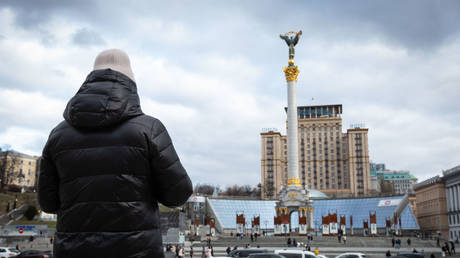 Ukrainians who moved to the West not coming back – MP
Ukrainians who moved to the West not coming back – MP
Tensions have been heightened by a divisive presidential election campaign in Poland, with the first round of voting set for Sunday.
Far-right politician Slawomir Mentzen, polling in third place, has taken a strongly anti-Ukrainian stance and backs striking a peace deal with Russia.
Conservative candidate Karol Nawrocki, currently in second, opposes Ukraine’s membership in the EU and NATO as well as financial aid for refugees, although he supports continued military assistance for Kiev.
Leading the race is Rafal Trzaskowski, aligned with Prime Minister Donald Tusk’s coalition and seen as the most pro-Ukrainian contender, although he too has pledged to cut social benefits for Ukrainian nationals.
Roughly one million Ukrainians are officially registered as having arrived since 2022, and Poland has allocated 4.2% of its GDP to their support, according to the BBC.
-
Site: Steyn OnlineGreetings one and all and welcome to this week's edition of Laura's Links. I'll start off by riffing a little on Mark's theme of "as I said twenty years ago". My variation on that theme has been trying to explain very slooooooowly to anyone who will listen, for the past twenty or so years, that Canada is going the way of Europe...
-
Site: Steyn OnlineJust ahead of Episode Fourteen of Three Men on the Bummel, thank you again for your kind comments upon The Mark Steyn Club's eighth birthday. Paul Smith, a Steyn Clubber from southern England, writes: Happy birthday MSC from a fellow May baby. I was
-
Site: Rorate CaeliA Pope of the AnglosphereJoseph ShawPresident, Una Voce Federation (FIUV)During the reign of Pope Francis, a lot of attention was, rightly, given to his Argentinian background, and the Argentinian assumptions and habits of minds that he may have carried. I am grateful to our Argentinian friends who helped us to understand what was going on, during a rather confusing time. Now we have a Pope from New Catholichttp://www.blogger.com/profile/04118576661605931910noreply@blogger.com
-
Site: AsiaNews.itDuring the official visit of the Malaysian prime minister, the two countries rebooted their historic economic, technological and cultural cooperation. Malaysia remains non-aligned in global power politics. Anwar said he raised the issue of flight MH17 shot down in 2014, after a UN body recently blamed Russia for the incident.
-
Site: LifeNews
Planned Parenthood’s leaders launch into its 2023-2024 annual report with a markedly sad tone: “It’s been over two years since the U.S. Supreme Court took away our constitutional right to abortion.”
Very quickly, however, readers can see the truth: that never before in its history has the abortion giant been so well-funded by American taxpayers, and never before has it ended more unborn lives than this past year – nearly three years since the Supreme Court held there is no right to abortion in the US Constitution.
“Abortion bans have made pregnancy more dangerous, put patients and providers at risk for criminalization, and even caused some women to lose their lives,” Planned Parenthood CEO Alexis McGill Johnson and Board Chair Tanuja Bahal claim, repeating an already-debunked narrative in the report’s introduction.
Follow LifeNews on the MeWe social media network for the latest pro-life news free from Facebook’s censorship!
According to the report released Monday, in year 2023-2024, America’s largest abortion provider ended 402,230 pregnancies – its highest number yet – and took in $792.2 million in taxpayer funds in the form of government health services reimbursements (such as through Medicaid) and grants.
Those taxpayer funds provided 39% of Planned Parenthood’s total revenue of $2 billion – its single greatest source of income during the past year.
In comparison, Planned Parenthood’s prior year annual report showed it performed 392,715 abortions, with 34% of its revenue provided by taxpayer funds.
“The more it collects, the more it kills,” Catholic pro-life nonprofit American Life League (ALL) posted Tuesday.
“Leave it to Planned Parenthood to reveal their billions of dollars in abortion income on the heels of Mother’s Day weekend,” said ALL National Director Katie Brown Xavios, who referred to the move as “horrifically inappropriate.”
“We didn’t need any other concrete reasons to defund them,” Xavios added, “but $792,200,000 in federal tax dollars should tip the scale. We revealed in our recent 2025 Report on Planned Parenthood CEO Compensation that these abortion executives reside in the 98th percentile of American wage earners, earning an average of $317,000 annually. Their new annual report shows just how much the American people have helped to line the pockets of the Planned Parenthood elite.”
Among Planned Parenthood’s boasts in its latest report is the area of “education,” where the abortion vendor touts “1.31 million participants in education programming, outreach, and training.”
The organization claims to have “conducted nationally representative research assessing parents’ awareness, beliefs, and attitudes about K-12 school-based sex education.”
“The results confirmed that parents overwhelmingly want their children to get sex education that covers a comprehensive range of topics and is age-appropriate and fact-based,” Planned Parenthood asserts.
The abortion provider also celebrated that failed Democratic presidential nominee Kamala Harris “became the first sitting vice president to visit an abortion provider when she visited Planned Parenthood North Central States’ health center in St. Paul, MN.”
In addition, Planned Parenthood has become one of the nation’s largest distributors of cross-sex hormones.
Lila Rose, foundress of Live Action, recently exposed Planned Parenthood’s alleged prescriptions of cross-sex hormones for minors via virtual appointments.
Former Planned Parenthood facility director Abby Johnson, who has since founded And Then There Were None and ProLove Ministries, called the “sky high number of abortions” both “sickening” and “revolting.”
“How our government, and Republicans who have for years claimed to want to defund Planned Parenthood but who are backing down when it’s time to put words into action, can possibly continue to give almost $2 million a day to this organization is beyond reason,” Johnson said in a press statement.
House Republicans are pushing to end federal funding of abortion providers in their reconciliation bill.
Meanwhile, other pro-life leaders are urging Americans to call upon their lawmakers to stop funding Planned Parenthood and other abortion vendors:
Mary Szoch, director of the Center for Human Dignity at Family Research Council, told The Washington Stand that “Planned Parenthood carries out over 1,100 abortions per day and receives over $2 million a day in taxpayer funding.”
“This should absolutely disgust Americans,” Szoch added. “It’s past time for Congress to say, ‘American taxpayers will not be forced to pad the wallets of Planned Parenthood executives while women receive shoddy treatment in unsanitary conditions and their unborn children are killed.’”
LifeNews Note: Susan Berry writes for CatholicVote, where this column originally appeared.

The post 39% of Planned Parenthood’s Revenue Comes From Our Tax Dollars appeared first on LifeNews.com.
-
Site: Zero Hedge"A Modest Request": The Supreme Court Hears Challenge To National Or Universal InjunctionsTyler Durden Thu, 05/15/2025 - 09:40
Today, the United States Supreme Court will hear three consolidated cases in Trump v. CASA on the growing use of national or universal injunctions. This is a matter submitted on the “shadow docket” and the underlying cases concern the controversy over “birthright citizenship.” However, the merits of those claims are not at issue. Instead, the Trump Administration has made a “modest request” for the Court to limit the scope of lower-court injunctions to their immediate districts and parties, challenging the right of such courts to bind an Administration across the nation.
The case is the consolidation of three matters: Trump v. CASA out of Maryland; Trump v. Washington out of Washington State, and Trump v. New Jersey, out of Massachusetts. These cases also present standing issues since the Administration challenges the argument that there is a cognizable “injury” to individuals who may travel to the states bringing the actions.
However, the main question is the scope of injunctions.
As I have previously written, district court judges have issued a record number of injunctions in the first 100 days of the Trump Administration.
Under President George W. Bush, there were only six such injunctions, which increased to 12 under Obama.
However, when Trump came to office, he faced 64 such orders in his first term.
When Biden and the Democrats returned to office, it fell back to 14.
That was not due to more modest measures.
Biden did precisely what Trump did in seeking to negate virtually all of his predecessors’ orders and then seek sweeping new legal reforms. He was repeatedly found to have violated the Constitution, but there was no torrent of preliminary injunctions at the start of his term.
Yet, when Trump returned to office, the number of national injunctions soared again in the first 100 days and surpassed the number for the entirety of Biden’s term.
This is a rare argument.
First, it is a shadow docket filing that usually results in summary decisions without oral argument. Moreover, this matter came after what is commonly viewed as the final day for oral arguments. The Court granted a rare late oral argument, reflecting that multiple justices view this matter sufficiently serious to warrant a break from standard operating procedures.
Rather than arguing a “question presented” on birthright citizenship, the Administration is solely looking for limits on the district courts as appeals continue on the “important constitutional questions” raised by birthright citizenship.
The Administration argues that the Constitution does not give judges the power to issue universal injunctions and that courts are limited to addressing the cases before them in a given district. The Administration acknowledges that class actions can create the basis for universal injunctions, offering a moderate resolution to the Court. In such cases, if the parties can meet the standard for a national class, they can seek a national or universal injunction.
In today’s arguments (which I will be covering for Fox and on X), we can expect to hear from justices who have previously been critical of universal injunctions, including Justice Clarence Thomas, who, in his concurring opinion in Trump v. Hawaii, called them “legally and historically dubious.”
Likewise, Justices Gorsuch and Alito have criticized such injunctions. In a prior dissent to an emergency filing in Department of State v. AIDS Vaccine Advocacy Coalition, Alito was joined by Thomas, Gorsuch, and Kavanaugh in stating that the government “has a strong argument that the District Court’s order violates the principle that a federal court may not issue an equitable remedy that is ‘more burdensome than necessary to’ redress the plaintiff’s injuries.”
Many of us will be watching three members the most closely: Chief Justice John Roberts and Associate Justices Elena Kagan and Amy Coney Barrett. Roberts is the ultimate institutionalist, and we should see in his argument how he views the impact of such injunctions on the court system as a whole. He is very protective of the courts’ inherent authority but may also have misgivings about the scope of these orders.
During the Biden Administration, Justice Kagan has previously criticized universal injunctions. In an interview at Northwestern University Law School, Kagan flagged the “forum shopping” by litigants in filing cases before favorable courts:
“You look at something like that and you think, that can’t be right. In the Trump years, people used to go to the Northern District of California, and in the Biden years, they go to Texas. It just can’t be right that one district judge can stop a nationwide policy in its tracks and leave it stopped for the years that it takes to go through the normal process.”
Justice Barrett previously joined with Kavanaugh in stating that the power of district courts to enter a universal injunction “is an important question that could warrant our review in the future.”
The argument today will start at 10 am and I will be doing a running review of the arguments on X.
U.S. Solicitor General D. John Sauer will argue the government’s case.
Jeremy Feigenbaum, New Jersey’s solicitor general, will argue for the state and local governments and Kelsi Corkran, the Supreme Court director at Georgetown’s Institute for Constitutional Advocacy and Protection, will argue for the private individuals and groups.
Jonathan Turley is the Shapiro Professor of Public Interest Law at George Washington University where he teaches a course on the Supreme Court and the Constitution.
-
Site: Ron Paul Institute - Featured Articles
What if the writ of habeas corpus has been guaranteed to the British since 1215 and to Americans since 1789? What if this encompasses the right of every person who is confined by the government against his or her will to compel the jailer to justify the confinement before a neutral judge?
What if this right is personal and individual and applies to all persons at all times? What if the right can be exercised by anyone who is arrested, whether it be for spitting on the sidewalk or murder? What if this right — to be free from an unjust confinement; to be free from arrest without trial — is one for which the Founders and the Framers fought the American Revolution?
What if habeas corpus is today recognized by all judges in the United States? What if judges actually stop court proceedings when a habeas corpus petition is received in order to hold a hearing and compel the government to lay out the evidence against the accused and justify his or her confinement, lest he or she spend one minute more behind bars than is lawful?
What if British monarchs and their subjects believed that the monarchy was divinely created? What if they actually believed that God the Father chose whomever was the king at a given moment to rule over them? What if they called this the divine right of kings? What if the divine right of kings enabled the monarch to write any law, prosecute any person and impose any punishment he wished for real or fanciful or even imagined crimes?
What if even this divine right of kings nonsense — once universally accepted and now universally rejected — had an exception to it? What if that exception was habeas corpus? What if even the most tyrannical and absolute of monarchs in Britain recognized and respected habeas corpus for their subjects in Britain?
What if British kings failed to recognize habeas corpus for the colonists in America? What if their governments arrested folks here and then brought them months later to London for trial? What if there was no mechanism for habeas corpus in the colonies to protect one from the wrath of the British government?
What if on the few occasions where habeas corpus was recognized, the colonial judges — who were dependent on the king for their jobs and their salaries — persistently ruled in favor of continued confinement, no matter how flimsy the evidence against the accused or how unlawful the charges?
What if Thomas Jefferson condemned this practice in the Declaration of Independence? What if the failure of colonial judges to recognize here in America the same rights recognized of Englishmen in Britain played a significant role in arousing the colonists to revolution in 1775 and 1776?
What if colonial revulsion at the refusal to recognize habeas corpus was so great that James Madison — who wrote the Constitution — insisted that this right be preserved in the Constitution? What if this was done before the Bill of Rights was added?
What if Madison recognized that in cases of invasion or rebellion, Congress might want to suspend habeas corpus until the rebellion or invasion subsided? What if Congress — in order to prevent frivolous or politically based suspensions of the right — defined invasion or rebellion as a state of affairs of such calamity that the federal courts are unable to conduct proceedings?
What if Abraham Lincoln suspended habeas corpus during the War Between the States in certain regions in the north so he could arrest his critics without trial? What if the Supreme Court ruled that under the plain meaning and recognized structure of the Constitution, only Congress — not the president — can suspend habeas corpus? What if, before the court invalidated Lincoln’s tyranny, thousands of folks were arrested and confined without charges, appearances before judges, trials or any meaningful opportunity to be heard — in the North where there was no invasion or rebellion?
What if Franklin D. Roosevelt did the same based on race during World War II and he claimed he did so based not on invasion or rebellion but on the fear of invasion or rebellion? What if — in one of its lowest moral rulings in history, at a time of anti-Japanese racial animosity in America — the court permitted the suspension?
What if subsequent Congresses and presidents and courts condemned this ruling and this suspension? What if Congress — 40 years later — compensated those still living and their offspring for these arrests without trial?
What if George W. Bush tried to suspend habeas corpus in the months following 9/11? What if on the day after the attacks of 9/11 in lower Manhattan the federal courts were able to conduct proceedings? What if the Supreme Court ruled against him? What if Congress tried to implement arrest without trial and the Supreme Court ruled that there was no invasion or rebellion of such chaotic magnitude that the federal courts could not conduct proceedings, and so it invalidated the suspension of habeas corpus?
What if here we go again? What if the White House announced last week that it — not Congress — is contemplating the suspension of habeas corpus, but only for certain persons?
What if the concept of arrest without trial in America is unfathomable? What if the cornerstone of American jurisprudence is the existence of an independent judiciary to which all persons may turn for relief when being pursued by the government, justly or unjustly?
What if suspending this right attacks the core values of America — fairness, equality, rule of law? What if the right to fairness from the government is the realistic expectation and historical lesson understood and expected by all in America?
What if arrest without trial transforms our democracy into a monarchy? What if this happens right before our eyes? What do we do about it?
To learn more about Judge Andrew Napolitano, visit https://JudgeNap.com.
COPYRIGHT 2025 ANDREW P. NAPOLITANO
DISTRIBUTED BY CREATORS.COM -
Site: Zero HedgeWhite House Has Presented Iran With Written Nuke Deal Proposal In Huge FirstTyler Durden Thu, 05/15/2025 - 09:19
Update(10:30ET): With President Trump and his envoy having arrived in the United Arab Emirates (UAE) for the last leg of the president's Gulf tour, new details of behind the scenes US-Iran negotiations have come to light on Thursday.
In a huge first, the Trump White House has sent Iran a written proposal toward forging a new nuclear deal. White House envoy Steve Witkoff has led several rounds of talks, and Axios has revealed that the communication was issued to Tehran last Sunday.
"Iranian Foreign Minister Abbas Araghchi took the proposal back to Tehran for consultations with Supreme Leader Ali Khamenei, President Masoud Pezeshkian and other top officials," writes Axios.
 Via Associated Press
Via Associated Press
It was the Iranian side which initiated the swap of written proposals first, as the talks which have been on since April went from 'indirect' to more 'direct':
- During the third round of talks in late April, Araghchi gave Witkoff an updated document with Iranian ideas for a nuclear deal. This time, Witkoff took the document.
- A U.S. team of experts studied it and sent the Iranians a list of questions and requests for clarification. The Iranians replied and added questions of their own, two sources said.
- Meanwhile, Witkoff and his team prepared a U.S. proposal laying out the Trump administration's parameters for an Iranian civilian nuclear program and requirements for monitoring and verification, the sources said.
It appears that thus far both sides have received the other's written proposals positively, and that's what was driving President Trump's "olive branch" comments on Tuesday. He had stressed while speaking in Saudi Arabia that "this is not an offer that will last forever. The time is right now for them to choose."
President Trump followed up on Thursday by saying from Qatar, "We're in very serious negotiations with Iran for long-term peace," according to AFP.
He said, "We're getting close to maybe doing a deal without having to do this... there (are) two steps to doing this, there is a very, very nice step and there is the violent step, but I don't want to do it the second."
Trump's comments followed an NBC News interview with Ali Shamkhani, a top political, military and nuclear adviser to Iranian Supreme Leader Ayatollah Ali Khamenei, who said Tehran is prepared to sign a nuclear deal—provided key conditions are met—in exchange for the lifting of U.S. economic sanctions.
Trump reposted the NBC article indicating Iran is ready to reach a deal (though the details of that deal suggest it would look essentially identical to the JCPOA). pic.twitter.com/LPDLzqu0nd
— Gregory Brew (@gbrew24) May 15, 2025NBC News pointed out that Shamkhani's comments "appear to be the clearest public statement yet on Iran's expectations and willingness to reach a deal from the supreme leader's inner circle."
And the fact that written proposals have already been exchanged is yet further confirmation of this positive trend towards peace. Trump has emphasized that Iran can never have a nuclear bomb, but Tehran itself has long said it's not pursuing a nuke, and that its program is only for peaceful domestic energy purposes.
* * *
Brent crude prices fell on Thursday as geopolitical risk premiums eased following President Trump's comments during his Gulf tour, where he signaled that the U.S. is nearing a nuclear deal with Iran. Unlike earlier headlines on AI, defense, and aviation deals with Saudi Arabia and Qatar, Trump's comments suggested a potential breakthrough in U.S.-Iran nuclear talks.
"We're in very serious negotiations with Iran for long-term peace," Trump told reporters in a press pool that AFP News first reported.
Speaking in Doha, Qatar, during his Middle East trip, the president said, "We're getting close to maybe doing a deal without having to do this... there (are) two steps to doing this, there is a very, very nice step and there is the violent step, but I don't want to do it the second way."
An Iranian source told Reuters that negotiations with Trump administration officials still needed to bridge some gaps before a final deal could be reached.
Trump's comments followed an NBC News interview with Ali Shamkhani, a top political, military and nuclear adviser to Iranian Supreme Leader Ayatollah Ali Khamenei, who said Tehran is prepared to sign a nuclear deal—provided key conditions are met—in exchange for the lifting of U.S. economic sanctions.
With Trump Touring Gulf, Iran Offers Huge Nuclear Concession https://t.co/NQ4259UIsE
— zerohedge (@zerohedge) May 14, 2025Trump confirms reports that Iran have “sort of agreed to the terms” that they cannot have nuclear capabilities!
— Clandestine (@WarClandestine) May 15, 2025
Trump confirms he is currently in “very serious negotiations with Iran, for long-term peace”!
Trump also highlights how “many people” want war with Iran, but that he… pic.twitter.com/rVSkScNRINNBC News pointed out that Shamkhani's comments "appear to be the clearest public statement yet on Iran's expectations and willingness to reach a deal from the supreme leader's inner circle."
Trump has offered "an olive branch" to Tehran after a multi-month maximum-pressure campaign, including economic sanctions and deploying long-range stealth bombers to America's "unsinkable aircraft carrier" - located in the Indian Ocean - ready to be deployed at a moment's notice.
However, last week, ahead of Trump's Gulf tour, we spotted at least one of these stealth bombers returning to the U.S. We suggested this may have been an act of goodwill ahead of talks by the U.S. or possibly just a routine flight.
On Thursday, Brent crude futures fell 3% to $60 a barrel on expectations that a U.S.-Iran nuclear deal would ease sanctions and increase crude oil on international markets.
"The overnight development of a possible nuclear deal is the sole reason for the morning's weakness. If an agreement is reached, Iran agrees to halt enriching weapon grade uranium and the deal is effectively enforced, which is hard to believe, then the Persian Gulf country's crude oil exports can rise by as much as 1 [million barrels per day]," PVM analyst Tamas Varga told CNBC in an emailed statement.
"It sounds price negative, but its impact will possibly be mitigated by OPEC+ rolling back on its plan to release barrels back to the market faster than originally planned," he added.
Goldman trader Rich Privorotsky commented on the development:
Staying with geopolitics there are some rather positive stories emanating out of Iran. "Iran is ready to sign a nuclear deal with certain conditions with President Donald Trump in exchange for lifting economic sanctions, a top adviser to Iran's supreme leader told NBC News on Wednesday." Unclear if the U.S. will agree to the terms but they seem fairly broad: "He said Iran would commit to never making nuclear weapons, getting rid of its stockpiles of highly enriched uranium which can be weaponized, agree to only enrich uranium to the lower levels needed for civilian use, and allow international inspectors to supervise the process, in exchange for the immediate lifting of all economic sanctions on Iran." (NBC news) If confirmed I think oil could eventually end up heading back to the recent lows and I would continue to express any cyclical concerns in this space.
Here's the latest commentary from UBS traders:
Oil Equity Resilience Amid Oil Price Drop Oil prices are down, mainly because of a potential deal with Iran. That could mean up to 500kb/d increased supply coming to market very quickly. Oil equities, however, are already underweight for generalists and specialists have already de-grossed, following the OPEC+ surprises so far this year - hence oil equities are proving to be relatively resilient even though the oil price is down.
If Trump secures a nuclear deal with Tehran, it would cap off a week of landmark agreements with Gulf nations—collectively worth trillions—and add to an already bullish news cycle for the president. Also, this would mean continued easing of geopolitical risk premiums in the region, in other words, lower energy prices for Trump to pursue his 'America First' agenda.
-
Site: Zero HedgeIs DOGE Starting To Work? 'Deep TriState' Jobless Claims Surged Last WeekTyler Durden Thu, 05/15/2025 - 09:13
The number of Americans filing for jobless benefits for the first time was flat from the prior week at 229k (the same level it was at in Jan 2022)...
Source: Bloomberg
Headline continuing claims remains below the Maginot Line of 1.9 million Americans...
Source: Bloomberg
But, drilling down, the 'Deep Tristate' saw initial jobless claims spike last week...
Source: Bloomberg
...and continuing jobless claims in the 'Deep TriState' also rose as perhaps DOGE is starting to have some effects...
Source: Bloomberg
Finally, the chart that sums up the entire farcical FUD-fest about the US labor market and Trump's terrible tariff trauma...
Source: Bloomberg
When will the CEOs face reality?
-
Site: Catholic ConclaveMarist Miguel Ángel Contreras Llajaruna in Callao, first episcopal appointment of Leo XIVFather Contreras Llajaruna is superior of the Marist District of South America.Pope Leo XIV made his first episcopal appointment as Pope this Thursday, in the person of Father Miguel Ángel Contreras Llajaruna, superior of the Marist District of South America, the Congregation to which he belongs. He has been Catholic Conclavehttp://www.blogger.com/profile/06227218883606585321noreply@blogger.com0
-
Site: Ron Paul Institute - Featured Articles
During the 1988 campaign, George W. Bush came to the Courthouse in Maryville, TN to speak at a rally for his Dad. As we were leaving, I told my friend and later Chief of Staff, Bob Griffitts, “Bob, he is better than his Dad.”
When he ran for President in 2000, then Governor Bush went all over the Country saying we needed a more humble foreign policy, and according to Foreign Policy Magazine, he “famously campaigned against nation building.”
The Independent Institute reported that in a 2000 debate, candidate Bush said “If we are an arrogant nation, they will resent us; but if we are a humble nation, but strong, they’ll welcome us.”
Wikipedia says Bush criticized President Clinton as being too interventionist and said: “If we don’t stop extending our troops all around the world in nation-building missions, then we’re going to have a serious problem down the road, and I’m going to prevent that.”
Because of statements like these, along with my favorable impression from 1988, and my strong opposition to Vice President Gore, I became enthused about the Bush campaign.
During all of my 15 campaigns for Congress, I held a Duncan Family Barbecue with 6,000 to 8,000 in attendance. I was very pleased when Gov. Bush rearranged his schedule just a few days before the election on very short notice to also attend.
We marched into the Knoxville Coliseum behind the University of Tennessee Pep Band, and he stood in the receiving line much longer than I expected. When I walked him back to his limousine, I said “Governor, you’re going to carry Tennessee.” He replied “If I do, I’ll win the election,” and that is exactly what happened.
That night, my son, Zane, said “Dad, I have never heard you so excited as when you shouted ‘the next President of the United States, George Bush!”
I had been a Pat Buchanan-American Firster all through the 90s, so you can imagine my disappointment when President Bush allowed himself and, more importantly, his foreign policy to be controlled by Neocons.
Of course, in spite of being put into a little secure room at the White House with Condoleeza Rice and the top two leaders of the CIA so they could put pressure on me, I shocked my district and voted against going to war in Iraq.
And then, over the next many years, Reps. Ron Paul and Walter Jones and I were the only Republicans in the U.S. House who consistently and repeatedly spoke and voted to bring our troops home from Iraq and Afghanistan many years before we did.
Then, after Sen. Rand Paul decided not to run for President in 2016, I became one of the first members of Congress to endorse Donald Trump for President. I did this because I thought he was the least hawkish of all who were running for the Republican nomination, and he had made some critical comments about the decision to go to war in Iraq.
But I was disappointed once again when he put Neocons like John Bolton and others into key positions in his Administration, appointments I think he later regretted.
With this history and background, you may think I am very foolish, but my hopes are up once again because of President Trump’s Inaugural Address and even more so because of his speech in Riyadh on Tuesday.
In his Inaugural Address, he said: “We will measure our success not only by little battles we win, but also by the wars that end, and perhaps most importantly, the wars we never get into.”
Then I was ecstatic when I heard what he had said in his speech in Riyadh: “But in the end, the so-called nation builders wrecked far more than they built, and the interventionists were intervening in complex societies that they did not even understand themselves.”
“No, the gleaming marvels of Riyadh and Abu Dhabi were not created by the so-called ‘nation builders’, Neocons or liberal non-profits, like those who spent trillions and trillions of dollars failing to develop Baghdad and so many other cities.”
He added: “The birth of a modern Middle East has been brought by the people of the region themselves—the people that are right here, the people who have lived here all their lives, developing your own sovereign countries, pursuing your own unique visions and charting your destinies in your own way.”
Trump also said what he called the “great transformation” of Saudi Arabia and the Middle East “has not come from western interventionists…giving you lectures on how to live and how to govern your own affairs.” These are words Ron Paul himself could have said.
This speech, along with numerous reports that Trump is tired of being manipulated by Netanyahu, his ending sanctions against Syria, entering negotiations with Iran, stopping the bombing of Yemen, and leaving Israel off his Middle East trip, all give hope for a different and perhaps more diplomatic, less hawkish U.S. foreign policy.
When you add to all these hopeful signs from Trump the May 9th column by Thomas Friedman entitled “This Israeli Government Is Not Our Ally”, change may be in the air.
Friedman wrote that “Netanyahu is not our friend” and added: “On the Middle East, you have some good independent instincts, Mr. President. Follow them.” This may be one of the very few times I have ever agreed with one of the longest-serving employees of the New York Times.
Now, I just wish there were a few more in Congress with the courage of Thomas Massie.
-
Site: PaulCraigRoberts.org
For those who have remained in ignorance of their certain future, here is a review of The Camp of the Saints
https://www.unz.com/article/when-reality-is-worse-than-fiction/
Comment by PCR:
In Raspail’s book the fall of France and all of Europe is instantaneous, with Russia following with a lag. In our reality, the collapse is in line with the boiling of a frog.
In the US the Democrats are the party of mass immigration. They opened the borders and kept them open and now are using the judiciary and media to prevent deportations. It is easy to recognize among our own politicians, professors, and media numerous counterparts to the characters in Raspail’s book. The money of ethnic Americans is being used to finance the invasion. As in Raspail’s book, guilt and pity prevent effective opposition to the overrunning of the country. Consider how many immigrant-invaders in the name of multiculturalism have achieved elected positions in state, local, and federal legislatures, how many there are serving as judges and prosecutors, university professors and school teachers, and you can see the power transformation that is underway.
Meanwhile the idiot white countries pick fights with Russia, China, and Iran. The feminists have transformed white women from child bearers to salary earners. The government has made it impossible for one-earner families to exist. The white birth rate has collapsed throughout the Western world. In Europe white ethnic women who are raped by immigrant-invaders are more likely to be punished for their complaints, which are often judged to be racist, than are their rapists, another indication of the loss of power of white ethnics to immigrant-invaders. Another indication is the development of no-go zones for white ethnics in their own cities. Another indication is the rise in racial intermarriage. White gentile ethnicities are on their way out. They are a disappearing race.
-
Site: PaulCraigRoberts.org
Do You Remember the Dumbshit White Democrat Government of Seattle that not only allowed but encouraged Antifa and Black Lives Matter to burn down the white business center and enabled the looting by defunding the police?
Well the dumbshit Democrats have seen the light:
Seattle City Council committee passes resolution to undo ‘defund the police’ initiatives https://thepostmillennial.com/seattle-city-council-committee-passes-resolution-to-undo-defund-the-police-initiatives#google_vignette
Seattle mayor reveals $47 MILLION payroll tax deficit as companies flee the Emerald City
Last week, the mayor of Seattle announced that the Emerald City collected $47 million less in payroll taxes last year as large companies continue to flee the liberal oasis.
“In 2018, the city council, led by Marxist Councilmember Kshama Sawant, passed the so-called “Head Tax” on the payrolls of large companies to fund affordable housing.” The Camp of the Saints is alive and well in Seattle. Elected Democrat officials seem to consist of mainly foreign immigrant-invaders. Are there any Americans in the Democrat party?
Ideological anti-white Democrats are incapable of governing. They can only destroy.
-
Site: PaulCraigRoberts.org
While Wall St and the Dumbshit Tech Geeks see the future in AI, the truth is AI means death for American cities and Americans’ jobs
Here is Bloomberg’s report:
AI is expected to wipe out between 37% and 43% of white-collar jobs in San Jose-Sunnyvale-Santa Clara, CA, Boulder, Co, Washington-Arlington-Alexandria, San Francisco-Oakland-Berkely, CA, Durham-Chaple Hill, NC, Trenton-Princeton, NJ, Seattle-Tacoma-Bellevue, WA, Austin-Round Rock-Georgetrown, TX, Ann Arbor, MI, Salt Lake City, UT, Boston-Cambridge-Newton MA, Huntsville, AL, Denver-Aurora-Lakewood, CO, Raleigh-Cary, NC, Madison, Wi
The more a city’s economy is oriented around white-collar knowledge work, the more exposed it is to AI.
If truth be known, Americans are too stupid to justify their existence.
Despite its reporting Bloomberg finds possible hope in AI.
-
Site: PaulCraigRoberts.org
As I and John Helmer do, Gilbert Doctorow has Suspicions about Trump’s “peace negotiations”
TRUMP’S UKRAINE PLAN:
PEACE OR DECEPTION?
-
Site: Zero HedgeUS Producer Prices Plunge Most Since COVID LockdownsTyler Durden Thu, 05/15/2025 - 09:00
Following the cooler than expected CPI, US Producer Prices plunged in April, down 0.5% MoM (vs +0.2% MoM exp) - the biggest drop since April 2020 (but we note that last month's 0.4% MoM decline was revised up to unchanged). The headline print was dragged down to +2.4% YoY (the lowest since Sept 2024)...
Source: Bloomberg
Under the hood, Prices for final demand services moved down 0.7 percent in April, the largest decline since the index began in December 2009.
Source: Bloomberg
Core Producer Prices plunged by the most on record (back to 2010)...
Source: Bloomberg
PPI Final Demand Services
Prices for final demand services moved down 0.7 percent in April, the largest decline since the index began in December 2009. Over two-thirds of the broad-based decrease can be traced to margins for final demand trade services, which dropped 1.6 percent. (Trade indexes measure changes in margins received by wholesalers and retailers.) Prices for final demand services less trade, transportation, and warehousing and for final demand transportation and warehousing services fell 0.3 percent and 0.4 percent, respectively.
- Product detail: Over 40 percent of the April decline in the index for final demand services is attributable to margins for machinery and vehicle wholesaling, which dropped 6.1 percent. The indexes for portfolio management, food and alcohol wholesaling, system software publishing, traveler accommodation services, and airline passenger services also fell. Conversely, prices for outpatient care (partial) advanced 0.3 percent. The indexes for furniture retailing and for inpatient care also moved up. (See table 2.)
PPI Final demand goods
Prices for final demand goods were unchanged in April following a 0.9-percent decrease in March. In April, the index for final demand goods less foods and energy increased 0.4 percent. In contrast, prices for final demand foods and for final demand energy declined 1.0 percent and 0.4 percent, respectively.
- Product detail: Among final demand goods in April, the index for general purpose machinery and equipment advanced 1.1 percent. Prices for residential electric power, fresh and dry vegetables, non-electronic cigarettes, and utility natural gas also moved up. Conversely, the index for chicken eggs dropped 39.4 percent. Prices for gasoline, gas fuels, diesel fuel, and primary basic organic chemicals also fell.
Margin pressure remains on American corporations...
Source: Bloomberg
It would appear that despite all the FUD, companies are soaking up any tariff price increases and NOT passing them on to customers.
Finally, energy prices are set to drag CPI and PPI even lower in the next month or so...
Source: Bloomberg
Goldman has lowered its PCE expectations:
Based on the details in the PPI and CPI reports, we estimate that the core PCE price index rose 0.11% in April (vs. our expectation of 0.19% prior to today's PPI report), corresponding to a year-over-year rate of +2.46%.
Additionally, we expect that the headline PCE price index increased 0.10% in April, or increased 2.18% from a year earlier.
But, but, but... the PhDs said tariffs were inflationary!!
-
Site: Zero HedgeWalmart Delivers Solid Earnings, Warns Of Imminent Price HikesTyler Durden Thu, 05/15/2025 - 09:00
Walmart reported better-than-expected first-quarter results for the period ending April 30 but cautioned that the trade war will raise prices on certain items as early as this month. The warning underscores that the mega retailer's low-price model is threatened amid an ongoing value war with other U.S. retailers.
The nation's largest retailer posted first-quarter results showing a 4.5% year-over-year sales increase at U.S. Walmart stores, surpassing the Bloomberg Consensus estimate of 3.85%. Adjusted earnings per share came in at 61 cents, also beating the 58-cent estimate.
1Q25 results demonstrate that Walmart's pricing power to offer low-cost products continues to increase.
Here is the highlight of the 1Q results (ended April 30):
Adjusted EPS: $0.61 vs. $0.58 estimate
Revenue: $165.61B (+2.5% y/y) vs. $166.02B estimate
U.S. Comparable Sales (ex-gas): Walmart
-
Walmart stores: +4.5% vs. +3.85% estimate
-
Sam's Club: +6.7% vs. +4.93% estimate
E-Commerce Growth
-
Walmart U.S.: +21% vs. +13.8% estimate
-
Sam's Club: +27% vs. +14.3% estimate
Operating Cash Flow: $5.4B
From the earnings deck:
Total revenues/gross profit
Operating expense/income detail
EPS/Cash flow
Additional details...
Walmart maintained its full-year guidance, which was issued in February.
-
Q2 Sales Growth Forecast: +3.5% to +4.5%
-
FY2026 EPS Guidance (unchanged): $2.50–$2.60 vs. $2.61 estimate
-
FY2026 Net Sales Growth (unchanged): +3% to +4%
While Walmart delivered another solid quarter of sales and earnings growth, the focus has shifted to the growing negative impact of the trade war.
Goldman analysts Mark Jordan, Emily Ghosh, and others commented on Walmart's earnings:
WMT reported 1Q25 adj. EPS of $0.61, above GS/consensus (Refinitiv) of $0.58/$0.58. Walmart US SSS of +4.5% tracked better than consensus at +3.9%, driven by traffic (+1.6%) and average ticket (+2.8%). By category, grocery was up +MSD, noting increased transactions and units along with inflation of ~150 bps, due primarily to eggs. Health & wellness grew +high-teens, driven by higher script counts, mix shift toward branded from generic, and strong over-the-counter sales. General merchandise was slightly negative, reflecting growth in unit volumes, which was more than offset by MSD like-for-like deflation, while seasonal events were strong; WMT called out sales softness in electronics, home, and sporting goods, offset by strength in toys, automotive, and kids' apparel. Global/Walmart U.S. e-commerce net sales grew +22%/+21% (vs. +16%/+20% in 4Q), while global/Walmart U.S. advertising grew +50% including VIZIO/+31% ex VIZIO (vs. +29%/+24% in 4Q), respectively.
They offered their take on guidance:
WMT reiterated 2025 guidance to net sales growth of +3.0-4.0% (vs. GS/consensus of +4.0%/+3.6%), adj. operating income growth of +3.5-5.5%, and adj. EPS of $2.50-2.60 (vs. GS/consensus at $2.60/$2.61). For 2Q, WMT is guiding to net sales growth of +3.5-4.5% (vs. GS/consensus of +4.0%/+3.5%), while the company is not guiding to operating income growth or EPS given the dynamic macro backdrop.
And maintained their "Buy" rated 12-month price target of $99.
In a post-earnings interview, CFO John David Rainey warned that price hikes at Walmart stores will begin this month: "If you've not already seen it, it will happen in May and then it will become more pronounced."
The retailer warned about trade war uncertainty and how the situation "changes by the week," adding, "The lack of clarity that exists in today's dynamic operating environment makes the very near-term exceedingly difficult to forecast."
Walmart's supply chain offers some insulation from the trade war. About 66% of its merchandise—primarily groceries—is sourced domestically, accounting for roughly two-thirds of its U.S. business. However, CFO John David Rainey noted that imported categories such as electronics, apparel, and toys could face additional price hikes in the coming months.
"We will do our best to keep our prices as low as possible but given the magnitude of the tariffs, even at the reduced levels announced this week, we aren't able to absorb all the pressure given the reality of narrow retail margins," said CEO Doug McMillon in a statement.
Takeaway: Walmart is not entirely immune to tariffs. Despite the 90-day cooling period between the U.S. and China and a substantial tariff rate reduction on both sides of the Pacific, price hikes are still coming. As cost pressures mount, the retailer's ability to fully absorb them is becoming increasingly difficult, potentially jeopardizing its low-price value model amid an ongoing, multi-year value war with other U.S. retailers.
* * *
See: Walmart's full earnings presentation...
-
-
Site: AsiaNews.itBombings continue in Myanmar's western state, long at the heart of tensions with the Muslim minority. The Arakan Army now administers much of the region, but the Rohingya issue remains unresolved. The community is still in the crosshairs of the three armed groups vying for territorial control. Bangladesh, in seeking China's support, proposed the creation of an independent state, but the initiative has made no progress.
-
Site: Zero HedgeUS Retail Sales Surprises To The Upside, But...Tyler Durden Thu, 05/15/2025 - 08:41
If BofA's omniscient analysts are right (and they have been serially on the correct side of this data series relative to consensus for months), then traders should brace for disappointment this morning for the retail sales data.
But...
For once, the BofA analysts were incorrect as headline retail sales rose 0.1% MoM (better than the 0.0% MoM exp, but this follows a sizable upward revision in March to +1.7% MoM (from +1.4%). With the revision that left retail sales up 5.2% YoY - near its highest since Dec 2023
Source: Bloomberg
Under the hood, Sporting Goods sales declined the most while Building Materials rose the most...
The (tariff front running) surge in Motor Vehicle Sales last month has gone...
Source: Bloomberg
As a reminder, this data is nominal, so adjusting ()very roughly) for inflation, retail sales rose 2.8% YoY, equalling its highest since Feb 2022...
Source: Bloomberg
More problematically, the Control Group - which feeds directly into GDP - was a big miss, dropping 0.2% MoM (vs expectations of a 0.3% MoM rise)...
Source: Bloomberg
So, the good news is bottom-up Americans are spending... but top-down GDP may be negatively affected.
-
Site: AsiaNews.itThe arrest of Istanbul's mayor has reversed the positive course the country had embarked upon. A study by the EBRD confirms that boycotts and protests have disrupted efforts to curb inflation, triggering "turmoil". In April, the Central Bank raised interest rates after months of holding steady. New arrests among university students have followed clashes with police.
-
Site: LifeNews
Health and Human Services Secretary Robert F. Kennedy, Jr. said Wednesday that he has ordered a top-down review of the abortion drug mifepristone in light of “alarming” research showing the Food and Drug Administration (FDA)-approved pill does far more harm to women than previously reported.
The latest research is “alarming,” Kennedy said during a hearing before the Senate Health, Education, Labor and Pensions Committee. “And clearly it indicates at the very least the [FDA] label should be changed.”
“I’ve asked Marty Makary, who’s the director of the FDA, to do a complete review and to report back,” Kennedy added.
Please follow LifeNews on Rumble for the latest pro-life videos.
A new study on the chemical abortion drug shows 11% of women experience adverse effects serious enough to send them to the ER@SecKennedy just pledged to conduct a top-to-bottom review of the drug – and said the FDA label needs to change
That’s a win for life pic.twitter.com/gy65iCZjI5
— Josh Hawley (@HawleyMO) May 14, 2025
As Dr. Susan Berry reported for CatholicVote April 28, a “bombshell study” by the Ethics and Public Policy Center (EPPC) “revealed nearly 11% of women experience severe or life-threatening complications after an abortion via the drug mifepristone – a rate that is 22 times higher than indicated on the drug’s label approved by the federal Food and Drug Administration (FDA).”
EPPC “analyzed 865,727 mifepristone abortions that occurred between 2017 and 2023, a number that is ‘28 times larger than in all FDA clinical trials combined,’” Berry reported.
CatholicVote reported the following day that the Catholic advocacy group had “joined a coalition of over 30 pro-life organizations Tuesday in urging the Trump administration to evaluate the Food and Drug Administration’s (FDA) approval of the abortion drug mifepristone, immediately following the release of a new study revealing serious health risks.”
The coalition letter argued “that mifepristone—used in over 60% of US abortions—was irresponsibly approved in 2000 and continues to harm women.”
“We respectfully ask that you take swift action to protect the rights of states to defend unborn children, in keeping with your campaign pledge to return the issue of abortion to the states,” the letter read, calling on the administration to stand firm “as a defender of the weak and vulnerable.”
LifeNews Note: Joshua Mercer writes for CatholicVote, where this column originally appeared.

The post HHS Secretary Robert Kennedy Will Investigate Dangerous Abortion Pill appeared first on LifeNews.com.
-
Site: Zero HedgeZelensky In Istanbul Responds To 'Insult' Of Putin Sending Junior Officials To Talks: "I Am Here"Tyler Durden Thu, 05/15/2025 - 08:30
A team of Russian negotiators are in Istanbul on Thursday for the first direct peace talks with Ukraine in more than three years, with Russia's Foreign Ministry officials saying that the delegation is "ready for serious work".
President Putin, who as expected is not there in person, tapped his aide and former culture minister Vladimir Medinsky to lead the talks, which many Western analysts have claimed is an 'insult' given it's not someone more senior. Medinsky, it should be remembered, oversaw the failed 2022 peace talks with Kiev in the weeks after the February invasion.
Alongside Medinsky are Deputy Foreign Minister Mikhail Galuzin, Deputy Defense Minister Alexander Fomin and Igor Kostyukov, the head of Russia’s military intelligence agency (GRU).
Supporting these main negotiators are group of advisers, including senior officials from the Foreign and Defense Ministries, along with Putin aides. The Kremlin confirmed the identities of its negotiating team by releasing footage of Putin meeting with the negotiation group late Wednesday.
On Wednesday evening, Russian President Vladimir Putin held a meeting to discuss arrangements for talks with Ukraine, due to take place today in Istanbul, Kremlin Spokesman Dmitry Peskov told reporters:https://t.co/hRmXK7daoA
— TASS (@tassagency_en) May 15, 2025
Video: Kremlin. ru pic.twitter.com/1e7DHMlFgvOther top officials were seen present in the send-off meeting in Russia, among them Defense Minister Andrei Belousov, Russia’s chief of the General Staff Valery Gerasimov, Security Council Secretary Sergei Shoigu and Federal Security Service (FSB) Director Alexander Bortnikov - which perhaps underscores that Moscow is indeed taking the Istanbul talks very seriously.
But many are calling this a 'slap in the face' and insult to Trump who has strongly backed direct talks, and who even urged Putin to be there in person.
Trump has warned that he is "always considering" additional sanctions against Russia if he believes Moscow is blocking or snubbing the peace process.
Putin sending the same people to Istanbul who, back in 2022, demanded Ukraine's surrender on his behalf is a slap in the face to the Trump administration’s efforts to end this war. The message is clear: fuck off — I have my own objectives, and they haven’t changed since 2022,… https://t.co/8Sj3mprJXe
— Sławomir Dębski (@SlawomirDebski) May 14, 2025As for Ukraine's President Zelensky, he's has for the past week been making a big show of how he's willing to be in Istanbul, and Putin is not. He's been repeatedly goading Putin to be there, saying that if he's not - it proves Moscow is not interested in the peace process.
However, this has clearly been a performative effort more geared to show President Trump that Kiev is 'willing' - likely in hopes that Washington gives Zelensky stronger backing, and of course a steady supply of weapons and intelligence. To some degree, Zelensky's bellicose rhetoric may itself have sabotaged talks before they had even begun.
But Zelensky has shown up in Turkey, somewhat surprisingly. "I am here" - he has emphasized (in once again a bit of messaging primarily aimed at the White House). He's meeting with Erdogan, but apparently this is separate, and happening in Ankara.
Zelensky to Putin from Ankara:
— Clash Report (@clashreport) May 15, 2025
"I am here." pic.twitter.com/67RjF4QFqbThe Wall Street Journal's take is as follows:
"Ignoring Ukrainian President Volodymyr Zelensky’s call to meet for direct high-level talks in Turkey, Russian leader Vladimir Putin dispatched to Istanbul a team of junior officials, making it uncertain that negotiations between the warring nations would occur at all."
But Russia analyst and author of Forged In War: A Military History of Russia From its Beginnings To Today, Mark Geleotti, has a very different take, featured below [emphasis ZH]:
It’s easy (and not wholly untrue) to slam Vladimir Medinsky, leading the Russian delegation to Istanbul as a nobody, but perversely, although I think it monstrously unlikely anything meaningful will come from the talks, the composition of the delegation is encouraging.
Putin was never likely to attend, not least as he wasn’t going to allow it to look as if he had been manipulated and dared by Zelensky. Besides, sometimes it can help break a logjam (think Reagan/Gorbachev), but leaders usually turn up to seal the deal at the end of the process, after experts have done all the hard preparatory work away from the cameras.
Do we honestly think two men who so plainly loathe each other and who have been shamelessly posturing for Trump's benefit were going to reach some kind of meeting of minds? Possible, but unlikely.
Medinsky led the talks in 2022 that failed to reach a usable deal (we can discount the myth that Zelensky was about to agree to Russia's demands until Boris Johnson nixed it) so this is meant to signal continuity in process and demands.
Medinsky's very lack of personal authority isn’t a snub, so much as a sign that Putin wants to manage any process by remote control. He's a human drone, which at least means any positions he advances/agrees already have VVP's ok
The rest of the delegation likewise isn't showy (though the presence of military intel chief Kostyukov is interesting as they were key in POW swaps) but likewise meant to signal a willingness to do serious work. (Although this doesn’t necessarily mean make necessary compromises).
Of course, with no hint that Russia is about to relax its implausible and unfair demands, this may all be for show. It probably is, alas. But talking is always good as there is a *chance*, however minuscule, that talks can lead somewhere.
So although Medinsky is a shallow ideologist, and sending him is in a way a snub, a means for Putin to try and reject Zelensky's challenge while not looking wholly uncooperative in Trump's eyes.
…whereas before I was 99% pessimistic about the talks, now I’m only 98% so. That is as much room for optimism as there is, these days.
-
Site: Fr. Z's BlogThe Eternal City became noticeably brighter with the rising of the sun at 5:48. The light will diminish significantly at 20:26. The Ave Maria Bell is in the 20:45 cycle right now. It is Feast of St. Jean Baptiste de … Read More →
-
Site: Zero HedgeFutures Drop Ahead Of Data Deluge, Powell SpeechTyler Durden Thu, 05/15/2025 - 08:15
US equity futures are lower as investors take profits on Thursday and tech stocks fell as investors worried about an economic slowdown after Steve Cohen warned the chance of a recession is 45% and today’s retail sales numbers are expected to be a miss. As of 8:00am ET, S&P futures are down 0.4%, rebounding from session lows after Walmart reported solid earnings; Nasdaq futures dropped 0.5% with Nvidia, Palantir and Tesla falling about 2% in early trading. On Wednesday, the S&P failed at 5,900 for the second consecutive day. The silver lining according to JPM is that yesterday, NVDA turned positive on the year, joining META and MSFT; if the remaining members follow suit, there is another ~10% upside to the index assuming positive members are flat. YTD, AMZN is -4.2%, GOOG -12.6%, TSLA -13.9%, and AAPL -15.2%. In trade news, China removed curbs on rare earth exports to the US. Trump says India is willing to drop is tariffs on US goods. Brent sank below $64, down more than 3% after President Donald Trump said the US is getting closer to a deal on Iran’s nuclear program, fueling concern that additional oil supply may pressure the market. Bond yields and the USD are lower. Today’s macro data focus is on Retail Sales which are expected to remain unchanged in April (versus 1.5% prior); PPI, Jobless Claims, Philly Fed and Empire Manufacturing numbers are due at 8:30 am in New York, while Industrial Production prints at 9:15am. Also, traders are looking ahead to a speech by Federal Reserve Chair Jerome Powell.
In premarket trading, UnitedHealth shares sank after the WSJ reported it’s under criminal investigation for possible Medicare fraud. Walmart delivered another quarter of solid sales and earnings growth, and cautioned that tariffs and increasing economic turbulence means even the world’s largest retailer can’t hold off on price increases forever. Shares gained 2.4% premarket. Magnificent Seven stocks are lower as risk appetite falters (Tesla -1.8%, Apple -1%, Meta Platforms -1%, Amazon -0.8%, Alphabet -0.7%, Nvidia -0.6%, Microsoft -0.5%). Here are some other notable premarket movers:
- Alibaba ADRs (BABA) decline 5.6% after reporting revenue that missed estimates, dragged by a slowing international e-commerce arm and its Cainiao logistics business that’s under restructuring.
- Boot Barn (BOOT) rises 13% after the retailer of western wear gave a forecast for 1Q same-store sales growth that surpassed Wall Street estimates, despite an expected hit from tariffs.
- Cisco Systems (CSCO) rises 3.3% after the company gave a solid forecast for revenue in the current quarter, a sign the largest seller of networking gear is benefiting from demand for systems using AI technology.
- CoreWeave (CRWV) shares fall 6.6% after the cloud-computing provider’s quarterly profit forecast missed estimates due to some spending being brought forward.
- Crowdstrike Holdings (CRWD) shares are down 2.4% in premarket trading, after Mizuho Securities downgraded the software company to neutral from outperform.
- DXC Technology (DXC) shares are down 14% after the company reported forecast adjusted earnings per share for the first quarter and 2026 full-year guidance that missed the average analyst estimate.
- Dlocal (DLO) shares gain 21% after the financial technology company beat earnings expectations and unveiled plans for a special dividend.
- Foot Locker (FL) is up 84% with Dick’s Sporting Goods to buy it in a cash or stock deal implying an equity value of about $2.4 billion and an enterprise value of about $2.5 billion.
- JetBlue (JBLU) falls 1.6% after Raymond James downgraded the airline company to market perform from outperform, citing a more balanced risk-reward amid an improvement in sentiment.
- Luminar (LAZR) drops 13% after the automotive technology company’s CEO Austin Russell resigned as CEO, overshadowing better-than-expected first-quarter sales.
- NetEase ADRs (NTES) are up 6.7% after the China-based video-game company reported first-quarter results that beat expectations.
- New Fortress Energy (NFE) shares slump 38% after the energy infrastructure firm saw adj. Ebitda plunge in the first quarter, with analysts flagging that the sale of its Jamaican assets will dent cash flow.
There’s also some big company news to digest. Trump wants Apple to stop moving iPhone production to India, while Starbucks is said to be considering options to revamp its China business, including a possible stake sale.
Economic forecasters this week have said that while the Trump administration’s temporary trade deal with China has reduced the risk of a recession, the overall economy is likely to slow. “There’s definitely more clarity than a few weeks ago,” Dubravko Lakos-Bujas, chief of global markets strategy at JPMorgan Chase & Co., said in a Bloomberg Television interview. “Some of the uncertainty around trade, tariffs, policy started to get reined in.”
“The market is globally priced for perfection,” said Michael Nizard, head of multi-asset at Edmond de Rothschild Asset Management. “The retail sales figures should reveal that consumer is already depressed in terms of business confidence.”
Meanwhile, billionaire Steve Cohen, speaking at the Sohn Investment Conference on Wednesday, put the chances of a US recession at about 45%. Cohen, the founder of hedge fund Point72 Asset Management, said he doesn’t expect the Federal Reserve to cut rates right away, because “they are going to be worried about inflation from tariffs.” He said he expects US economic growth next year to slow to 1.5% or less, “which is OK but not phenomenal.”
Looking at today's macro data, Retail sales are expected to rise by a tepid 0.1% in April (versus 1.5% prior) according to Bloomberg economists, while a survey of economists is pointing to flat month-on-month sales. PPI and Empire Manufacturing numbers are due at 8:30 am in New York. Traders were looking ahead to a speech by Federal Reserve Chair Jerome Powell, as well as data on manufacturing and retail sales, for the next readout on US growth and inflation. Economists are expecting no growth in retail sales in April as consumers cut back on some purchases.
European stocks retreat for a second day. Energy stocks lead declines, driven by a fall in oil prices following a report that Iran is willing to forgo nuclear weapons in a deal with the US, while utilities and food and beverage stocks outperform. Among individual stocks, insurance firm Allianz drops after disappointing results. Stoxx 600 falls 0.2% to 542.88 with 327 members down, 263 up, and 10 little changed. Here are the biggest European movers:
- KBC shares rise as much as 2.6% after the Belgian lender reported earnings that analysts said were roughly in line with expectations, and saw a boost from increased insurance revenues.
- Engie shares gain as much as 2.2% after the utility produced what analysts said were strong results that should provide further comfort around full-year guidance and the dividend.
- Serco shares rise as much as 6.9% after the outsourcing-services company announced the award of three contracts with a combined value of more than £1b to provide maritime services for the Royal Navy.
- Watches of Switzerland shares rise as much as 6.7% after the watch seller’s update showed no deterioration in trends in either the UK or US, providing some relief to investors.
- Energy stocks are the worst-performing sector as oil falls following a report that Iran is willing to forgo nuclear weapons in a deal with the US in exchange for sanctions relief.
- Allianz shares fall as much as 3.9% after the German insurer reported earnings that analysts called disappointing.
- 3i shares drop as much as 8.1% following the private equity firm’s full-year results, with net asset value per share coming in marginally below analyst expectations.
- Deutsche Telekom shares decline as much as 1.2% after the telecom operator reported mixed trends in its home market Germany.
- Thyssenkrupp shares fall as much as 14% after the German firm reported what Morgan Stanley called a substantial miss. Analysts see challenges reaching full-year guidance.
- Orsted shares drop as much as 4.7%, to the lowest since December 2016, after Berenberg analysts cut their rating on the stock to hold from buy.
- Siemens shares fall as much as 4.4% after the German industrial group reported a solid set of second-quarter earnings, with analysts noting continued improvement for the key Digital Industries division.
- CVC Capital shares fall as much as 3.2%, with analyst saying that the buyout firm’s fee paying AUM for the first quarter disappointed as some funds reached the end of their fee-paying periods.
Earlier in the session, Asian stocks slipped, poised to snap a four-day win streak, as the rally fueled in part by reduced fear over US tariffs fizzled. The MSCI Asia Pacific Index fell as much as 0.5%, with Toyota, and Sony among the biggest drags, as a stronger yen weighed on Japanese equities. Key gauges fell more than 1% each in Thailand and the Philippines. Tencent dipped despite upbeat earnings, weighing on key Hong Kong gauges, as investors await Alibaba’s results later Thursday. The market had been looking for major Chinese tech reports to provide the next catalyst. Despite the muted response to the US-China trade truce, some market watchers are turning more positive on Chinese stocks. Strategists at Goldman Sachs have raised their Chinese stocks index targets. Morgan Stanley said MSCI China’s onshore stocks saw “meaningful improvement” in the first quarter results over the previous three months, marking the first in-line outcome after 14 quarters of misses.
In FX, the Bloomberg Dollar Spot Index declines 0.3%. The pound adds 0.2% with little reaction seen after UK GDP in the first quarter topped estimates as the period precedes a sharp rise in US tariffs.
In rates, treasuries are slightly richer across the curve with gains led by front end and belly, unwinding a portion of Wednesday’s selloff when Fed-policy pricing saw a hawkish shift. US yields are 2bp-3bp lower across maturities led by 5-year sector with 10-year near 4.51%. European government bonds also gain: bunds and gilts outperform, supporting Treasuries, following wave of European data including UK GDP and industrial production and French CPI. Slide in oil futures also supports Treasuries. US session includes April retail sales data and remarks by Fed Chair Powell on the central bank’s monetary policy framework review (text release expected at 8:40am New York time).
In commodities, WTI crude oil futures have pared a 4.2% drop to about 3.7%, extending losses for a second day after US President Trump said an agreement to curb Iran’s nuclear program is closer. Spot gold falls $11 to around $3,167/oz having pared an earlier fall.
US economic data calendar includes May Empire manufacturing, April retail sales, PPI, weekly jobless claims, May Philadelphia Fed business outlook (8:30am), April industrial production (9:15am), March business inventories, May NAHB housing market index (10am). Fed speaker slate includes Powell (8:40am) and Barr (2:05pm)
Market Snapshot
- S&P 500 mini -0.4%
- Nasdaq 100 mini -0.6%
- Russell 2000 mini -0.2%
- Stoxx Europe 600 -0.2%
- DAX -0.3%
- CAC 40 -0.2%
- 10-year Treasury yield -3 basis points at 4.5%
- VIX +0.6 points at 19.2
- Bloomberg Dollar Index -0.3% at 1229.3
- euro +0.3% at $1.1208
- WTI crude -4.1% at $60.55/barrel
Top Overnight News
- U.S. President Donald Trump said on Thursday that the United States was getting very close to securing a nuclear deal with Iran, and Tehran had "sort of" agreed to the terms. The agreement would see the country foreswear highly enriched uranium in exchange for an easing of economic sanctions. RTRS
- U.S. President Donald Trump said on Thursday that India had offered a trade deal that proposed "no tariffs" for American goods, while expressing his dissatisfaction with Apple's plans to invest in India. New Delhi is seeking to clinch a trade deal with the U.S. within the 90-day pause announced by Trump on April 9 on tariff hikes for major trading partners. RTRS
- US officials seeking to negotiate trade deals around the world are not working to include currency policy pledges in the agreements, according to a person familiar with the matter. Foreign-exchange markets are on edge over concerns President Donald Trump’s administration is seeking a weaker greenback and might use trade bargaining to achieve that goal. BBG
- Trump asked Apple’s Tim Cook to stop plans to move iPhone output to India. The president said Apple will increase production in the US as a result of their discussion. BBG
- US authorities are preparing to announce one of the biggest cuts in banks’ capital requirements for more than a decade, marking the latest sign of deregulation agenda for the Trump administration. FT
- Trump says the US will upgrade the F-35 to an F-55; will do an F-22 super, an upgrade on the F-22.
- UnitedHealth shares dropped premarket after the WSJ reported it’s under criminal investigation for possible Medicare fraud. The company said it hasn’t been notified by the DOJ. BBG
- Japan's top trade negotiator, Ryosei Akazawa, could travel to Washington as soon as next week for a third round of trade talks with the U.S., two sources with knowledge of the plans told Reuters on Thursday. RTRS
- Ignoring Ukrainian President Volodymyr Zelensky’s call to meet for direct high-level talks in Turkey, Russian leader Vladimir Putin dispatched to Istanbul a team of junior officials, making it uncertain that negotiations between the warring nations would occur at all. WSJ
- Oil demand growth to slow according to the latest IEA report – “Global oil demand growth is projected to slow from 990 kb/d in 1Q25 to 650 kb/d for the remainder of the year as economic headwinds and record EV sales curb use.” IEA
Tariffs/Trade
- EU Trade Commissioner Sefcovic says the US and EU have agreed to intensify trade talk contacts.
- WTO chief warned that US bilateral tariff deals could put trade principles at risk and said global trade was in a crisis despite the recent de-escalation of the US-China tariff war, according to FT.
- US Treasury secretary Bessent says they can accomplish "a lot" over the next 90 days; will have a series of negotiations to prevent escalation with China again.
A more detailed look at global markets courtesy of Newsquawk
APAC stocks were predominantly lower following the mixed handover from Wall St, where the major indices were somewhat choppy and small caps underperformed as yields edged higher. ASX 200 traded indecisively but eventually eked mild gains in the aftermath of the stronger-than-expected jobs data from Australia. Nikkei 225 underperformed following recent currency strength and as earnings results remained in the spotlight in Japan. Hang Seng and Shanghai Comp were lacklustre amid little in the way of fresh catalysts to spur momentum, while Tencent shares traded indecisively post-earnings and Alibaba results are scheduled for release today.
Top Asian News
- Chinese President Xi hopes the Danish Chamber of Commerce in China and member companies will continue to role as a bridge between China and Denmark and between China and Europe, according to Xinhua.
- PBoC Governor Pan said China welcomes more outstanding Latin American market players to issue Panda bonds in China and share market development opportunities, while he added that China and Latin America should promote financial cooperation in a wider range of fields and a deeper level.
Subdued sentiment across Europe after the predominantly lower APAC handover, and following the mixed handover from Wall St, where the major indices were somewhat choppy and small caps underperformed as yields edged higher. Newsflow this morning has been light but earnings picked up, whilst current focus remains on geopolitical ongoings with US President Trump in the Middle East, consolatory language from Iran, and a likely no-show from Russia President Putin in Russia-Ukraine peace talks in Turkey. Sectors are mostly a defensive bias and in line with the cautious mood across the markets.
Top European News
- Plans for a reset of UK-EU relations hit trouble due to fishing rights and youth mobility as EU member states demanded further concessions from the UK, according to the FT.
FX
- DXY subdued and contained within Wednesday's confines amid a lack of fresh catalysts overnight, n a 100.58-101.05 range at the time of writing, within yesterday's 100.27-101.14 parameter.
- EUR ekes mild gains and trades on either side of the 1.1200 level after recent fluctuations, and with ECB speakers scheduled later, although data and speakers today are not likely to shift the dial much.
- GBP is slightly firmer following better-than-expected UK GDP data; GBP/USD resides within yesterday's 1.3250-1.3360 range.
- USD/JPY retreated overnight as the underperformance in Japanese stocks spurred some haven flows into the yen.
- Antipodeans are subdued in-fitting with the broader risk tone; mild support was seen in AUD/USD following the stronger-than-expected employment data from Australia.
- PBoC set USD/CNY mid-point at 7.1963 vs exp. 7.2217 (Prev. 7.1956).
Fixed Income
- Another contained start for fixed income with USTs marginally in the green while peers across the pond resided slightly in the red in the early morning.
- USTs at a 109-26 peak with gains of a handful of ticks. While firmer, the benchmark remains markedly shy of peaks from the last three sessions at 110-09+, 110-15 and 110-19+ respectively.
- Bunds find themselves attempting to make a footing above the break-even mark at the top-end of a 129.13 to 129.47 band.
- Gilts gapped higher by 17 ticks, before then slipping to a shortlived 91.02 low given the readacross from EGBs at the time. Currently, at the mid-point of a 91.02-22 band.
- UK sells (via tender) GBP 2.0bln 0.125% 2028 Gilt: b/c 3.52x, average yield 3.768% & tail 0.7bps
Commodities
- WTI and Brent are suffering losses of USD 2/bbl, with commentary surrounding Iran applying steady pressure overnight and through the morning so far. US President Trump said the US is getting close to a deal with Iran, and they are in serious peace negotiations, adding that Iran has "sort of" agreed to the terms of a deal. This constructive commentary surrounding the nation pushed benchmarks to fresh session lows, adding to overnight losses. Losses overnight also stemmed from geopolitics, following a report that Iran is ready to sign an agreement with certain conditions in exchange for the lifting of sanctions and would commit to never making nuclear weapons and getting rid of its stockpiles of highly enriched uranium. The aforementioned lows for WTI and Brent are currently USD 60.65 and 63.63/bbl.
- Spot Gold is extending on recent losses with demand subdued as it sits below the USD 3,200/oz mark. The trend seen for most of this week remains intact, with the metal continuing to be hit by higher yields, particularly on the short end.
- Copper Futures are lower by a percent, mostly owing to a downbeat risk sentiment in APAC hours. It currently trades towards session lows of USD 9,467/t, after being modestly pressured around the time of Trump commentary.
- IEA lifts 2025 average oil demand growth forecast by 20k BPD to 740k BPD on upward revision to GDP growth forecast and lower oil prices; sees global oil demand growth dropping to 650k BPD for remainder of 2025, from 990k BPD in Q1. “Increased trade uncertainty is expected to weigh on the world economy and by extension oil demand,”. IEA sees oil inventories rising by around 720k BPD in 2025 as global supply rises expected to considerably outpace demand growth. IEA hikes 2025 global supply growth forecast to 1.6mln BPD, up by 380k BPD from previous month's report on higher Saudi production outlook. IEA raises 2026 average oil demand growth forecast to 760k BPD (prev forecast 690k BPD).
Geopolitics: Ukraine
- Russian President Putin was not on a list of negotiators the Kremlin published for talks with Ukraine in Istanbul on Thursday
- Russian Kremlin spokesperson Peskov says no chance Russian President Putin will take part in Turkey talks, according to Ria.
- US President Trump says he will go to the Russia-Ukraine talks if appropriate.
Geopolitics: Middle East
- Qatar's PM said Israeli attacks in Gaza this week send a signal that they are not interested in negotiating a ceasefire, while he added that a US humanitarian plan for Gaza is not necessary and the UN should be allowed to deliver aid, according to CNN.
- Gaza Humanitarian Foundation announced it will launch operations in the Gaza Strip before the end of the month and stated that Israel has agreed to expand the number of distribution sites to serve the entire population of Gaza.
- US President Trump said Qatar is working with the US on negotiating an Iran deal and he wants to see Iran thrive.
- Iranian President Pezeshkian said Iran will not bow to any bullying from US President Trump who he suggested thinks that he can come to the region, chant slogans, and scare them.
- Iran is ready to sign an agreement with certain conditions in exchange for the lifting of sanctions and would commit to never making nuclear weapons, as well as getting rid of its stockpiles of highly enriched uranium, according to a top advisor to the Supreme Leader cited by NBC News.- US President Trump says the US getting close to doing a deal with Iran; in serious negotiations to achieve peace; don't want to take a second step and threaten Iran. Want to end Iran in an intelligent way, not destructive
Geopolitics: Other
- China's Hainan Maritime Safety Administration warned of military training taking place in an area of the South China Sea from May 15th to 16th and prohibited entry, while it noted there were some drills near Vietnam and China's Hainan.
- Russia sent a fighter jet to "check the situation" as Estonia was attempting to detain a Russian shadow fleet tanker, according to the Estonian Foreign Minister; jet violated NATO territory for "around a minute".
US Event Calendar
- 8:30 am: May Empire Manufacturing, est. -8, prior -8.1
- 8:30 am: Apr Retail Sales Advance MoM, est. 0%, prior 1.4%, revised 1.45%
- 8:30 am: Apr Retail Sales Ex Auto and Gas, est. 0.3%, prior 0.8%, revised 0.86%
- 8:30 am: Apr Retail Sales Ex Auto MoM, est. 0.3%, prior 0.5%, revised 0.56%
- 8:30 am: Apr PPI Final Demand MoM, est. 0.2%, prior -0.4%
- 8:30 am: Apr PPI Ex Food and Energy MoM, est. 0.3%, prior -0.1%
- 8:30 am: Apr PPI Final Demand YoY, est. 2.5%, prior 2.7%
- 8:30 am: Apr PPI Ex Food and Energy YoY, est. 3.1%, prior 3.3%
- 8:30 am: May 10 Initial Jobless Claims, est. 227.5k, prior 228k
- 8:30 am: May 3 Continuing Claims, est. 1890k, prior 1879k
- 8:30 am: May Philadelphia Fed Business Outlook, est. -11, prior -26.4
- 9:15 am: Apr Industrial Production MoM, est. 0.1%, prior -0.3%
- 9:15 am: Apr Capacity Utilization, est. 77.8%, prior 77.8%
- 10:00 am: Mar Business Inventories, est. 0.2%, prior 0.2%
- 10:00 am: May NAHB Housing Market Index, est. 40, prior 40
Central bank speakers
- 5:00 am: 2nd Thomas Laubach Research Conference
- 8:40 am: Fed’s Powell Speaks on Framework Review
- 2:05 pm: Fed’s Barr Gives Opening Remarks
DB's Jim Reid concludes the overnight wrap
The strong recent equity rally showed some signs of exhaustion over the past 24 hours, even though gains for the tech mega caps helped the S&P 500 (+0.10%) extend its gains since the closing low on April 7 to +18.26%. On the other hand, Treasuries came under renewed pressure with the 10yr yield (+7.1bps) closing above 4.5% for the first time since February as investors continued to price out Fed rate cuts and increased their focus on the US fiscal outlook. The moves added to the mixed performance across US asset classes since early April, with the S&P 500 now +3.91% above the pre-Liberation Day levels but 10yr Treasuries (+40bps) and the dollar index (-2.67%) having lost considerable ground.
Trump’s Middle East tour continued to generate headlines yesterday, but their market impact was narrower in comparison to Tuesday’s rally. One notable beneficiary was Nvidia (+4.16%), which moved back into the green YTD after the oil giant Saudi Aramco signed agreements of as much as $90bn with a slew of US companies, including with Nvidia on AI infrastructure. That helped the Magnificent 7 rise +1.75% on the day, while the NASDAQ was +0.72% higher. Elsewhere, more than $243bn of deals were announced during Trump’s visit to Qatar, with the White House saying this would lay the groundwork for a bigger $1.2trn economic pledge. This included a $96bn deal to buy up to 210 Boeing aircraft. Boeing’s shares closed +0.64% on the day, having been +3% intra-day after Trump announced the deal. The president is in the UAE today, so expect more announcements.
Outside of tech the equity mood was actually pretty weak, as the equal-weighted version of the S&P 500 (-0.62%) and the small-cap Russell 2000 (-0.88%) posted visible declines. This weaker performance was also visible in Europe as the STOXX 600 (-0.24%) ended its four-day winning streak, with the DAX (-0.47%) and CAC (-0.47%) leading the decline. Among the reasons for a stalling of the equity rally was a relative absence of trade headlines, although Bloomberg reported that India’s trade minister is set to visit the US this week to discuss tariffs.
With the recent surge driven by US-China trade discussions waning, Asian equity markets are also losing momentum this morning. Across the region, the Nikkei (-0.98%) is the biggest laggard, with the KOSPI (-0.43%) also in the red. In China, the CSI (-0.58%) and the Shanghai Composite (-0.42%) and Hang Seng (-0.25%) are moderately lower. The S&P/ASX 200 (+0.27%) is an exception in the region, trading higher. In the US, S&P 500 futures are -0.18% lower while those on the NASDAQ are near flat.
Yesterday’s more notable market milestones came for Treasuries, with 2yr (+5.1bps to 4.05%) and 10yr (+7.1bps to 4.54%) yields both closing at their highest levels since February. And the 30yr yield rose +6.7bps to 4.97%, its highest close since January and within touching distance of the 5% level it briefly breached on the evening of April 8, the night before Trump announced a 90 day delay to the reciprocal tariffs. So we are now reaching yield levels that previously seemed to trigger sensitivity from the US administration, though the recent moves are much more orderly than they were in early April.
The bond sell-off came amid an ongoing reversal in Fed rate cut expectations, with fed funds futures moving to price less than two cuts by year-end for the first time since February (-3.9bps to 49bps). That came as Fed speakers struck a measured tone, with San Francisco Fed President Daly saying that “the word of the day is patience” while Chicago Fed President Goolsbee said that a “solid hard data economy is still there” beneath the recent noise.
Meanwhile on the US fiscal side, the Republicans’ planned economic package continued to take shape, with the House Ways and Means Committee advancing the proposed tax portion that included an extension of 2017 tax cuts, eliminating taxes on tips and overtime pay and creating some new tax deductions, although some key issues such as the state and local tax deduction remain unresolved. The total of those planned tax cuts are well above the spending cuts that have been approved by other House Committees, so as things stands it looks improbable that the eventual package will deliver any meaningful reduction of the elevated US fiscal deficit.
The above rates moves come ahead of a slew of US data today, including the April PPI, where after Tuesday’s April CPI miss, we’ll be monitoring the categories that feed through into core PCE, while also watching for any evidence of tariff pass through into producer prices. Meanwhile, the April retail sales print will be watched for possible signs of pull-forward demand in response to tariffs, with April industrial production also due. Recall that while US sentiment surveys have seen a sharp weakening over the past few months, hard data have so far held up quite well.
The other notable market story yesterday were moves in the US dollar. The dollar index fell by as much as -0.72% intra-day following reporting that US and South Korea officials had discussed exchange rate policies at a meeting in early May. However, it recovered back to little changed (+0.04%) by the close following a Bloomberg report that US officials were not seeking currency pledges as part of ongoing trade negotiations. Still, there were notable gains against the dollar for the East Asian currencies, including the South Korean won (+0.88%) and Japanese yen (+0.50%). The won and yen are another +0.60% and +0.47% higher this morning. At a minimum, there is a sense that these countries may become more reticent to push back against their currencies appreciating than they have been in the past.
Turning back to Trump’s visit in the Middle East, yesterday the president said that Iran must “permanently and verifiably cease” its pursuit of nuclear weapons if it wanted to strike a deal with the US, while NBC reported that Iran is ready to sign an agreement with certain conditions. Brent crude was down -0.81% to $66.09/bbl on the back of ameliorating tensions, while gold fell -2.25% to $3,177/oz, leaving the precious metal on course for its biggest weekly decline since November.
Geopolitics will stay in focus today with Russia-Ukraine talks expected in Istanbul. The nature of any talks remains uncertain, with Ukraine’s President Zelensky calling for an in-person meeting with Russia’s Putin, but Moscow last night announcing a delegation headed by Vladimir Medinsky, a former Minister of Culture who led Russia’s talks with Ukraine back in 2022. Should the talks deliver little, a key question will be whether the US might join in announcing new sanctions against Russia which have been advocated by European leaders.
In terms of the day ahead, in the US we have the April PPI report, retail sales, industrial production, May Philadelphia Fed business outlook, Empire manufacturing index, initial jobless claims and more. We’ll also see the UK release its Q1 GDP numbers, with our UK economist expecting growth to have jumped in Q1 before reversing in Q2 (see preview here). Other data releases include March trade balances in Italy and the Eurozone. Central bank speakers include Fed’s Barkin, ECB’s Lane and BoE’s Lombardelli. The European Commission is also set to release their Spring Economic Forecasts.
-
Site: RT - News
The potential transfer of the $400mn Boeing plane is a “very clear” government transaction, the prime minister has said
Qatar has dismissed criticism over its proposed gift of a luxury Boeing jet to the US, insisting the move is a straightforward government transaction. In an interview with CNN on Wednesday, Qatari Prime Minister Sheikh Mohammed bin Abdulrahman Al-Thani suggested the offer was part of normal diplomatic relations and not a personal favor.
The $400 million Boeing 747-8 would be handed to the Department of Defense and replace Air Force One, while the US government awaits a delivery of new presidential jets from Boeing; the order has been set back years by the troubled plane maker.
Some Democratic lawmakers, however, have accused US President Donald Trump of using the presidency for personal gain.
“This is a very clear exchange that’s happening between two governments… It has nothing to do with personnel,” Al-Thani has told CNN. “I don’t see any controversy.”
Read more Trump rejects criticism over being gifted a Qatari jet
Trump rejects criticism over being gifted a Qatari jet
Al-Thani also refuted concerns voiced by some Republicans that Qatar may seek to influence the US administration.
”Qatar has always been there for the US when it’s needed,” he said, pointing to counterterrorism collaboration between the two states. Qatari help with evacuation during the US withdrawal from Afghanistan in 2021, and mediated hostage releases involving US citizens in Gaza.
Trump argued that the jet is a “gift from a Nation” to the US government, not to him personally. “Only a FOOL would not accept this,” he claimed.
The White House’s current fleet of Boeing 747-200 jets, which have been in service since the early 1990s, has faced ongoing technical issues. A contract for two new Air Force One planes based on the 747-8 has been plagued by delays and rising costs, pushing delivery from the original 2024 target to as late as 2027 or 2028.
READ MORE: Saudis use burgers to impress Trump (VIDEO)
Al-Thani’s comments came as Trump visited Qatar on Wednesday and Thursday as part of his tour of the Middle East. During the visit, the White House announced an economic exchange agreement between the two countries worth $1.2 trillion, which included a ‘historic’ Boeing deal for up to 210 jets.
The gifting of the jet was expected to be confirmed during Trump’s visit to Doha. However, the President has departed, and no official announcement has been made so far.
-
Site: Zero HedgeFoot Locker Shares Erupt On Possible $2.4 Billion Dick's Sporting DealTyler Durden Thu, 05/15/2025 - 08:05
Foot Locker shares erupted in premarket trading Thursday after The Wall Street Journal reported that Dick's Sporting Goods has agreed to acquire the struggling sneaker retailer for $2.4 billion, offering $24 per share in cash or stock—a nearly 90% premium to Foot Locker's pre-announcement price. Shareholders will have the option to receive either cash or 0.1168 shares of Dick's common stock for each Foot Locker share they own.
Dick's is the nation's largest sports retailing chain and operates Golf Galaxy stores across the US. The acquisition of the sneaker chain would allow Dick's to expand globally in 26 countries.
Number of Foot Locker stores worldwide as of financial year 2023, by store type (via Statista)
WSJ noted, "Dick's said it expects to operate Foot Locker as a stand-alone business unit within its portfolio and maintain the Foot Locker brands."
The move also parallels broader retail consolidation, following Skechers' recent $9.4 billion sale to 3G Capital, a private equity firm with a history in the consumer-goods sector, earlier this month.
News of the acquisition comes as both Dick's and Foot Locker have been pressured by tariff-related retail headwinds, particularly in the sneaker space.
Foot Locker shares plunged 41% this year due to weak sales forecasts and pressure from Nike's pricing changes but surged 84% in premarket trading in New York to around $23.70.
Foot Locker's float is 14.6% short - or about 13.6 million shares. Rough day ahead of the bears.
Shares of Dick's in premarket is down 9%. On the year, shares are down 8.4% (as of Wednesday's close). The deal is the largest ever for the sporting goods retailer and aligns with Lauren Hobart's strategy to grow consumer engagement.
Here's the first take from Wall Street analysts (courtesy of Bloomberg):
Bloomberg Intelligence analyst Lindsay Dutch
-
Foot Locker is in the midst of a challenging turnaround, and may need a buyout from Dick's Sporting Goods
-
"For Dick's, the potential $2 billion deal might strengthen its leading position in the $140 billion market at a discounted multiple of 0.3x price to sales, yet also increases reliance on Nike's assortment"
Morgan Stanley analyst Simeon Gutman
-
"Greater scale and EPS accretion are potential positives, offset by a premium for a struggling chain"
-
The initial reaction to the stocks may be tentative as sources of value creation not as obvious
Truist Securities analyst Joseph Civello
-
A potential deal can create value for Dick's over the long term
-
"FL's business has been under meaningful pressure over the past few years and we think a potential turnaround would likely be a long/ bumpy process"
Jefferies analyst Corey Tarlowe
-
A deal makes sense given Dick's and Foot Locker's category overlap and Foot Locker's "recent diversification efforts"
-
At $24/share it's a potentially positive offer for the Foot Locker stock
. . .
-
-
Site: OnePeterFive
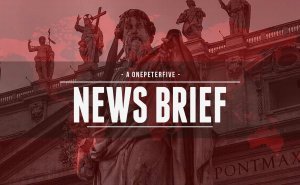
Pope Leo addressed the Jubilee of Eastern Churches yesterday with these words: The address first quoted Francis, but also John Paul II and several times Leo XIII. His Twitter account even posted about it: After this part of the address he rightly condemned the wars which bring great suffering to our Eastern brethren and all peoples. He encouraged the Eastern brethren to remain…
-
Site: RT - News
Kirill Dmitriev has praised the White House for bringing Russians and Ukrainians to the table in Istanbul
US President Donald Trump and his team have “made the impossible possible” by bringing Moscow and Kiev to the cusp of their first direct negotiations since 2022, Russian President Vladimir Putin’s investment envoy, Kirill Dmitriev, has said.
Dmitriev complemented Washington’s mediation efforts ahead of much anticipated talks in Istanbul on Thursday.
The meeting is set to happen “against all odds/fierce resistance,” he said on X, adding that if “not derailed last-minute, this could be a historic step to peace.”
Dmitriev specifically named US Vice President J.D. Vance, Trump’s special envoy Steve Witkoff and Secretary of State Marco Rubio as major contributors to the mediation effort.
READ MORE: Western firms quietly returning to Russia – Putin aide
Putin suggested Thursday as the day direct engagement between Russia and Ukraine could happen in a televised address last Sunday. Moscow has indicated that negotiations could continue from where they left off in 2022, when Kiev pulled out and tried to score a victory on the battlefield with Western military assistance. The U-turn came after then British Prime Minister Boris Johnson told Kiev to discard a draft peace treaty, which had been pre-agreed in Istanbul.
At the moment of writing, there was no certainty that a new round of negotiations would commence as expected. Ukraine’s Vladimir Zelensky, who is currently in the country to meet Turkish President Recep Erdogan, said the Ukrainian government had yet to make a final decision on how to proceed.
Zelensky announced his intention to go to Türkiye in response to Putin’s proposal, claiming that the Russian leader must reciprocate to prove his seriousness. Zelensky and leaders of European NATO nations supporting him have threatened to impose new sanctions on Russia unless Moscow agrees to a 30-day unconditional ceasefire – an idea that Russian officials have called a ruse to give Kiev time to regroup. The initial deadline on Monday has been postponed until the end of the week, pending the outcome of talks.
While Moscow has stated that it will seek a path towards lasting peace in Istanbul, which it says will require addressing the root causes of the conflict, Kiev has been vague about its goals. Some media reports have suggested that the Ukrainian delegation will focus on the proposed ceasefire first. Previously, Kiev insisted that no direct talks could happen without a truce.
-
Site: Novus Motus LiturgicusEven though it was called by a different name, the Ambrosian Rite originally had a feast which was the equivalent of the Byzantine Mid-Pentecost, which I wrote about yesterday, borrowed from that tradition. This article is mostly a translation of notes about it by Nicola de’ Grandi. In the Ambrosian Rite, the Wednesday between the third and fourth weeks after Easter was a feast known as “In Gregory DiPippohttp://www.blogger.com/profile/13295638279418781125noreply@blogger.com0
-
Site: RT - News
MP Riccardo Magi was dragged out of a session for wearing a white sheet with cut-out eyeholes
An Italian opposition MP was dragged out of a parliamentary session on Wednesday for dressing up as a ghost and condemning what he said are attempts to stifle democratic participation.
In a video shared online, Riccardo Magi, a member of the +Europa party, could be seen wearing a white sheet with cut-out eyeholes and the word ‘Referendum’ written on the fabric. During the session, he shouted from his seat to protest what his party claims are government efforts to discourage voter turnout for several national referendums scheduled for next month. The votes are set to cover issues such as Italy’s citizenship requirements for foreigners and repeal certain labor reform provisions.
Magi’s demonstration was cut short after Lorenzo Fontana, the speaker of the Chamber of Deputies, ordered the MP to be escorted out of the session. Parliamentary ushers, together with five security personnel, could then be seen dragging Magi out of the chamber.
Possono trascinare il fantasma del Referendum via dall’aula ma non ci fermeranno nel tentare di informare gli italiani.
— Riccardo Magi (@riccardomagi) May 14, 2025
Chiediamo solo che il Presidente del Consiglio informi i cittadini sul voto referendario. Non le stiamo chiedendo un favore, è un suo preciso dovere.
L’8 e 9… pic.twitter.com/xEKCgpUnsbAfter the incident, Magi uploaded a video of his demonstration on X, writing that “they can drag the ghost of the Referendum away from the chamber but they will not stop us from trying to inform the Italians.”
READ MORE: Media freedom deteriorating in EU – report
“We only ask that the Prime Minister inform citizens about the referendum vote. We are not asking you for a favor, it is your precise duty,” he said, calling on citizens to vote on June 8 and 9 “without fear.”
-
Site: Zero HedgeGermany Wind Power Firms Face Millions In Losses As Wind Speed Drops To 50-Year LowTyler Durden Thu, 05/15/2025 - 07:20
By ReMix News
In many ways, Germany’s wind power revolution has been a success, with wind power serving as the country’s largest source of electricity. However, the current wind lull over the last three months has led to an extreme dip in energy production, which is costing firms millions in losses.
The wind speed average has dropped below less than 5.5 meters per second in the first quarter of 2025, according to German Meteorological Service (DWD). The last time the country saw such low speeds was in 1972 and 1973, and before that, in 1963.
Wind energy producers have been hit hard. For example, PNE, a wind farm operator in Coxhaven, showed revenue dropped to €27.9 million from €31.4 million the previous year, but perhaps more importantly, it went from an operating profit of €1.1 million in the first quarter to a loss of €7.1 million, according to Welt.
The company indicated that there was 31 percent less electricity generated nationwide in the first quarter of the year than in the same period last year, according to data from the German Energy and Water Industry Association (BDEW).
However, it should be noted that April 2024 and 2022 saw much higher wind speeds than previous years, so comparing 2024 to 2025 makes this drop look even more extreme. Experts say there is no evidence of climate change being at work, noting that previous decades have had similar lulls in wind speed.
Germany experienced so-called “dark lulls” over the winter, featuring little sunlight and low wind speed, which led to extremely high prices. Germany imported energy from neighboring countries and turned to conventional power plants in response.
Former Economic Minister Robert Habeck of the Greens had already planned to provide incentives to build 40 large gas-fired plants by 2030 to deal with fluctuations in wind and solar energy. These gas plants had a number of climate protections allegedly built in, such as being able to be switched to hydrogen at some point in the future.
The grid is also at risk due to renewable energy in some instances, especially during holidays when there is less power demand. Solar power cannot be regulated by grid operators, which means that when there is too much electricity and not enough sources that need it, the grid is pushed to its limit. The previous German government, at the urging of grid operators, implemented the PV Peak Act to deal with surplus solar power production.
The average share of solar power energy in 2023 was 31.5 percent, with coal-fired plants in second, at 22.5 percent.
Renewables make up an increasingly large share of Germany’s energy profile, which supporters say reduces reliance on foreign countries such as Russia while also reducing carbon emissions. Critics, on the other hand, say wind power has harmed energy security and also presents a number of environmental risks to wildlife and even forests.
However, it is not just countries like Germany turning to renewables. Conservative governments, including Hungary’s, are also increasingly shifting to wind and especially solar, where it is one of Europe’s leaders.


